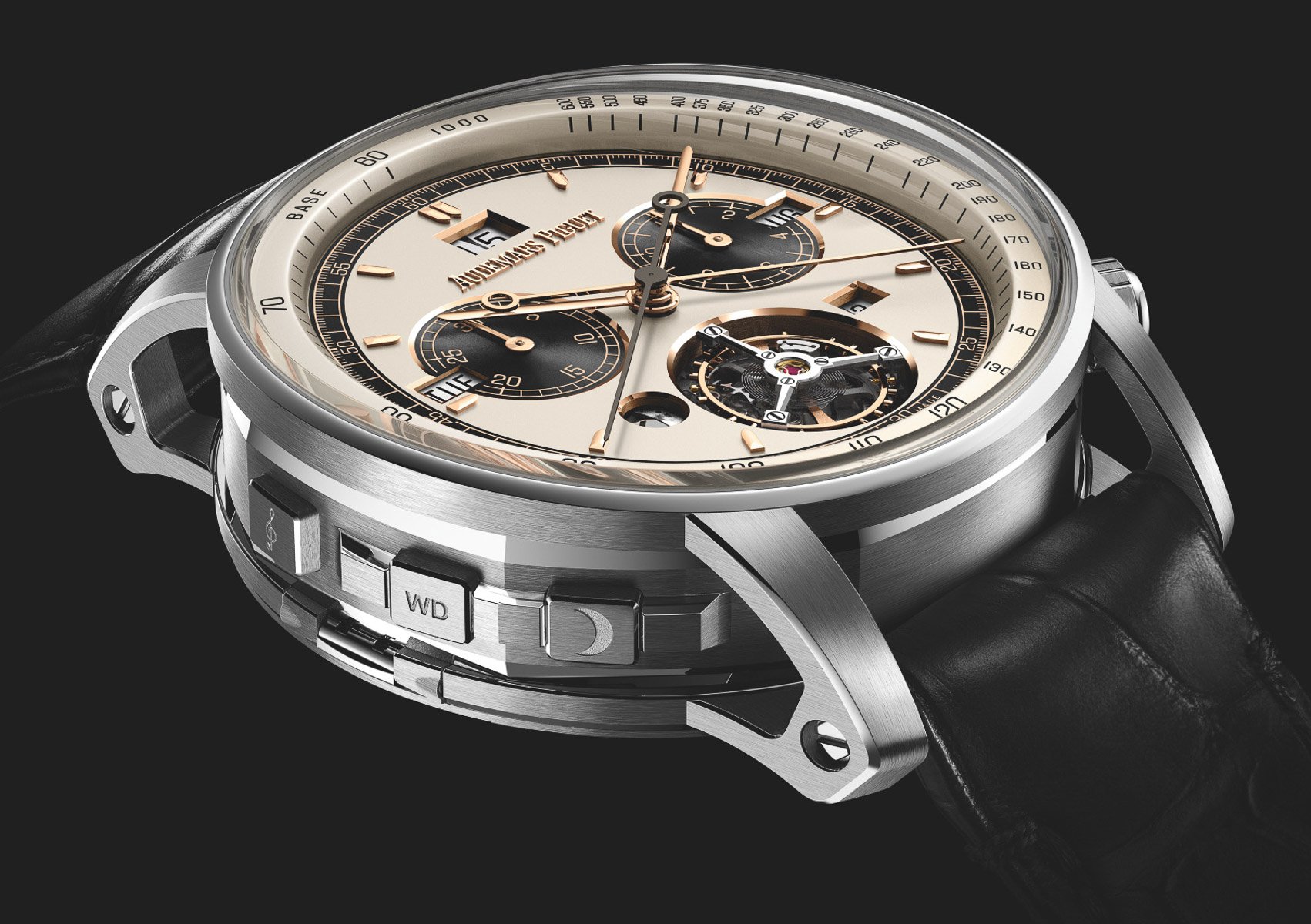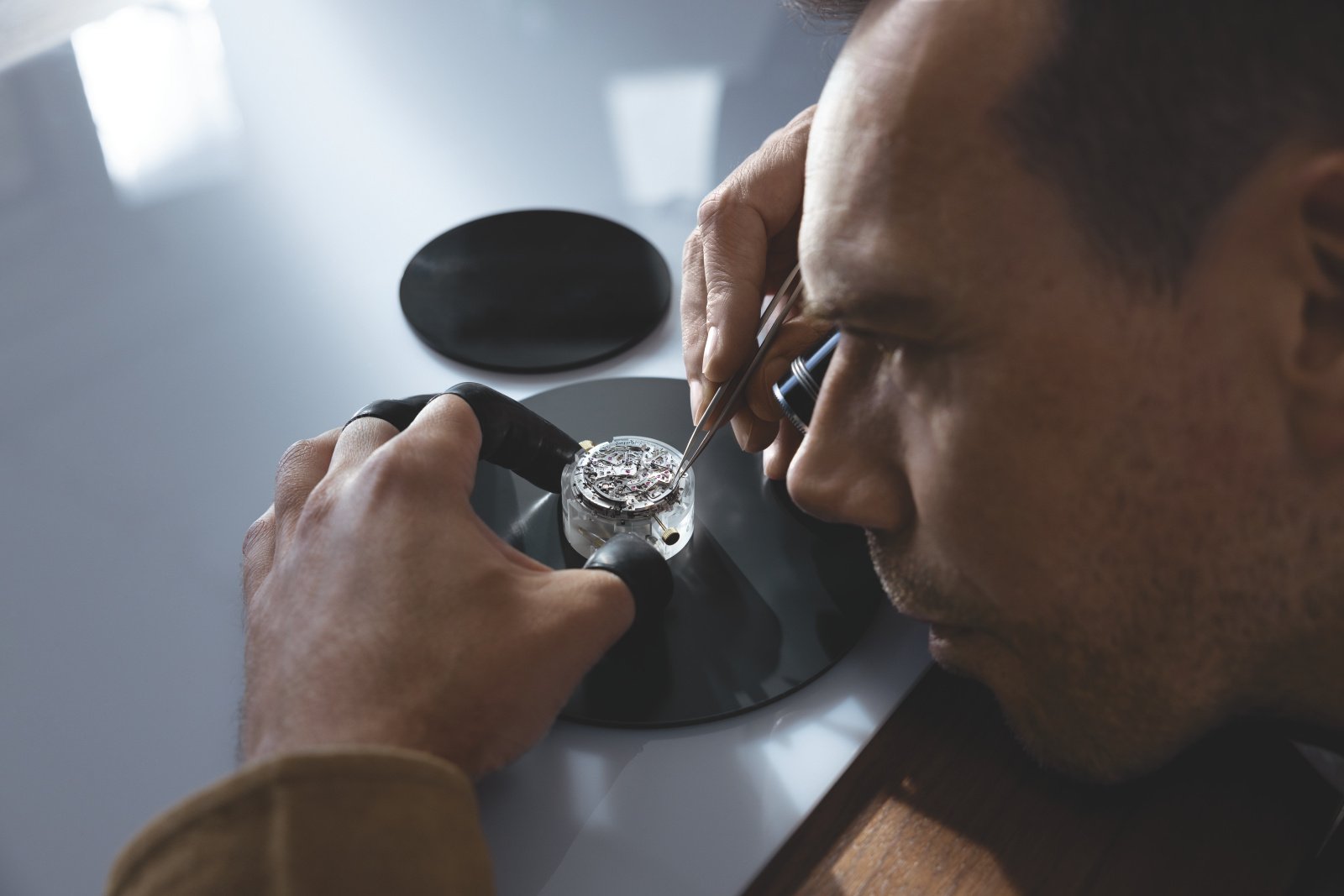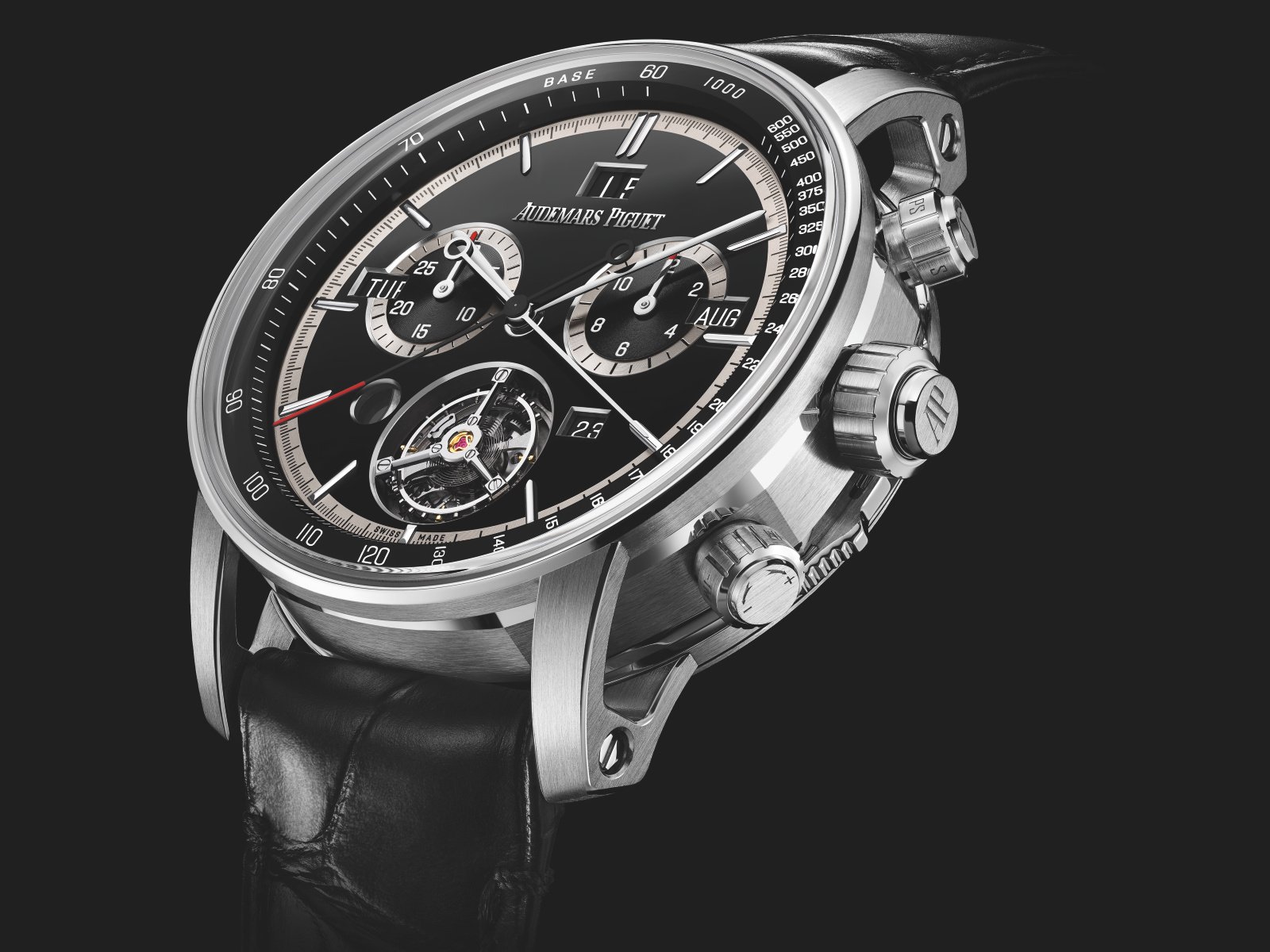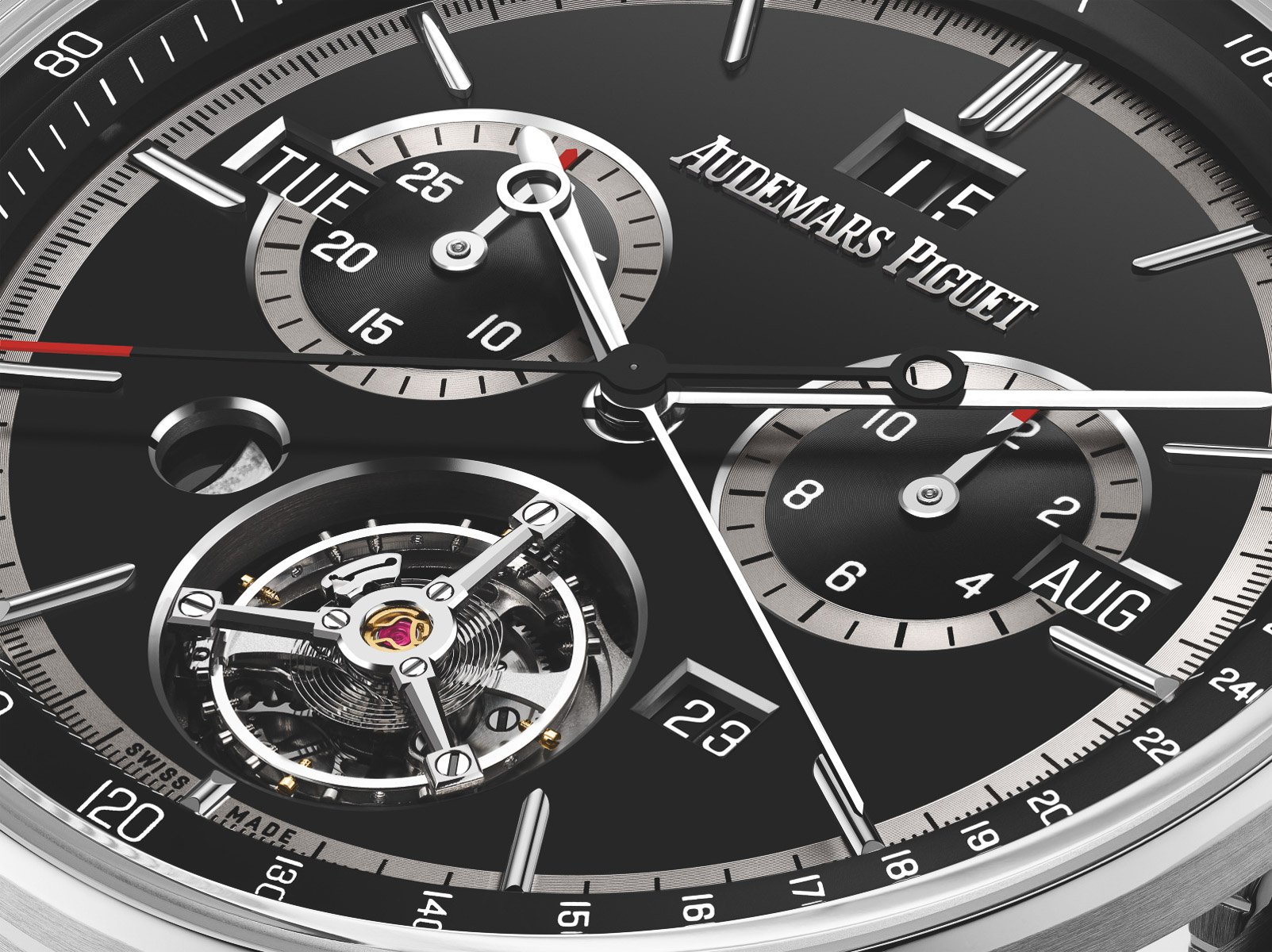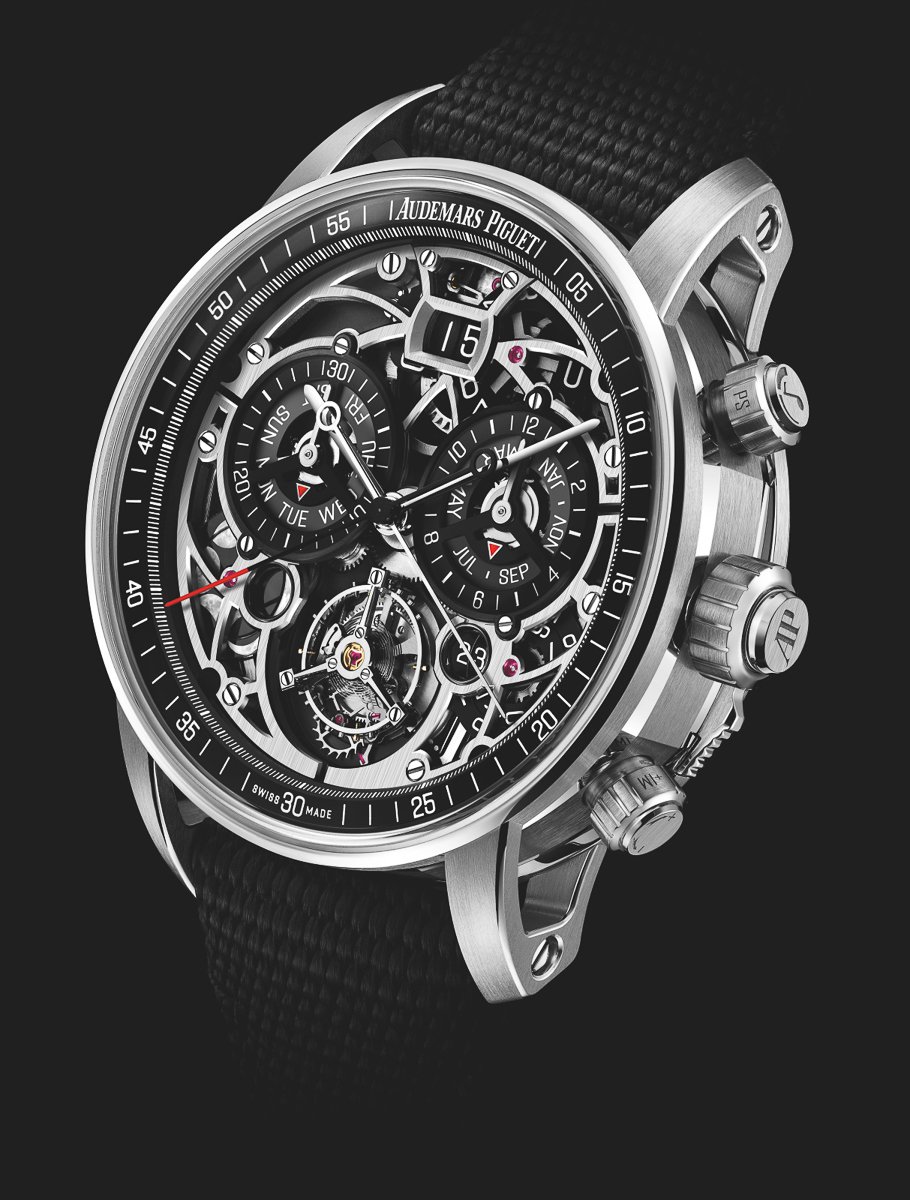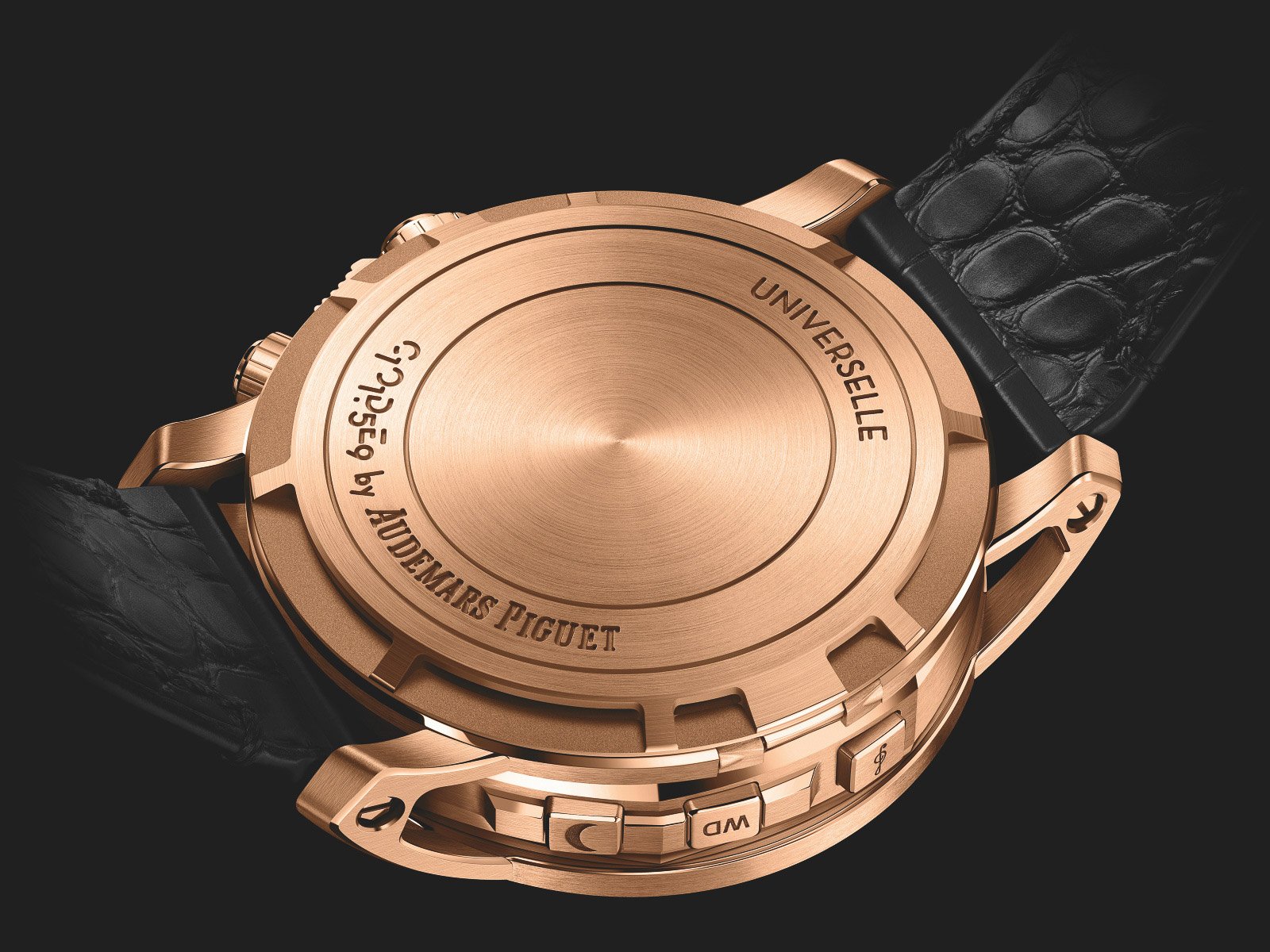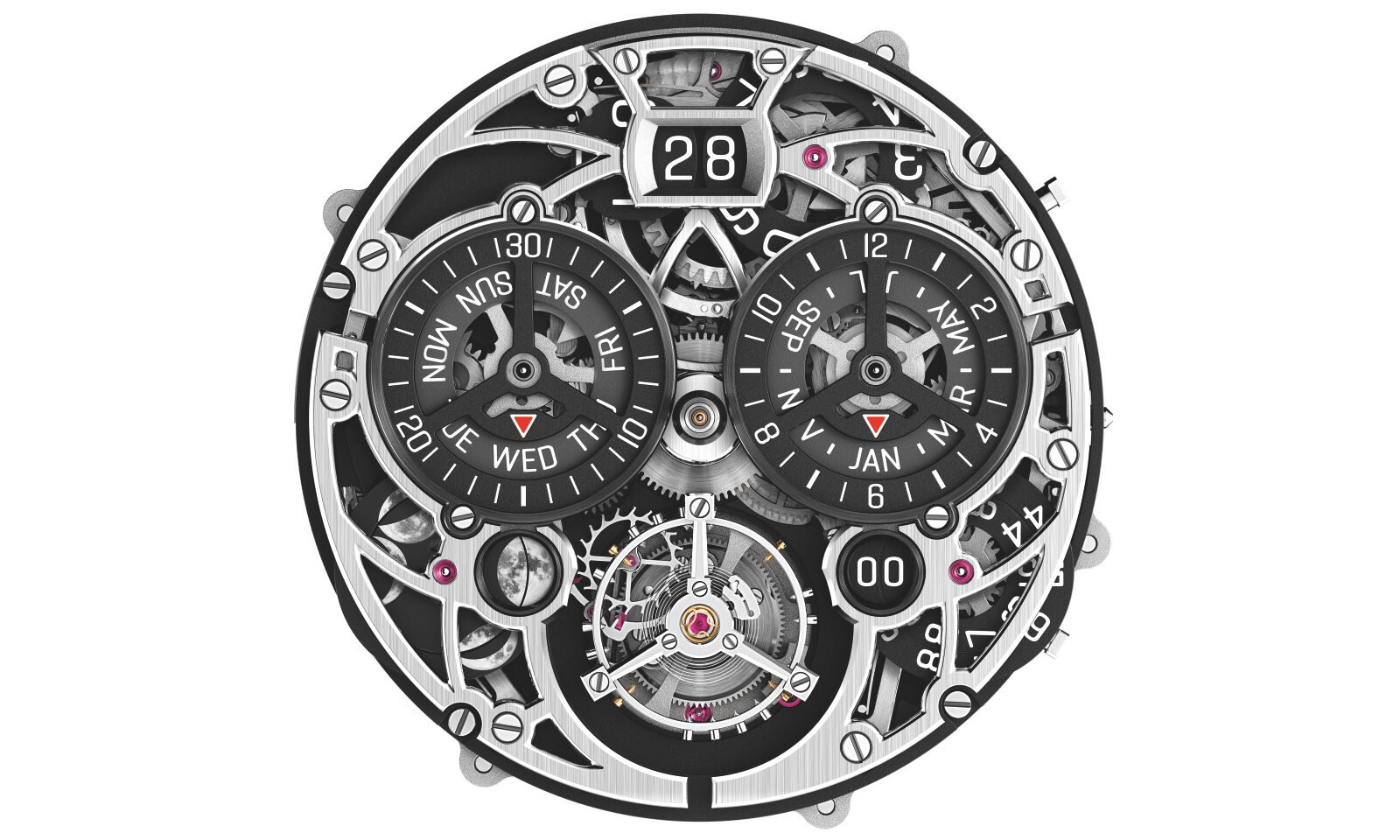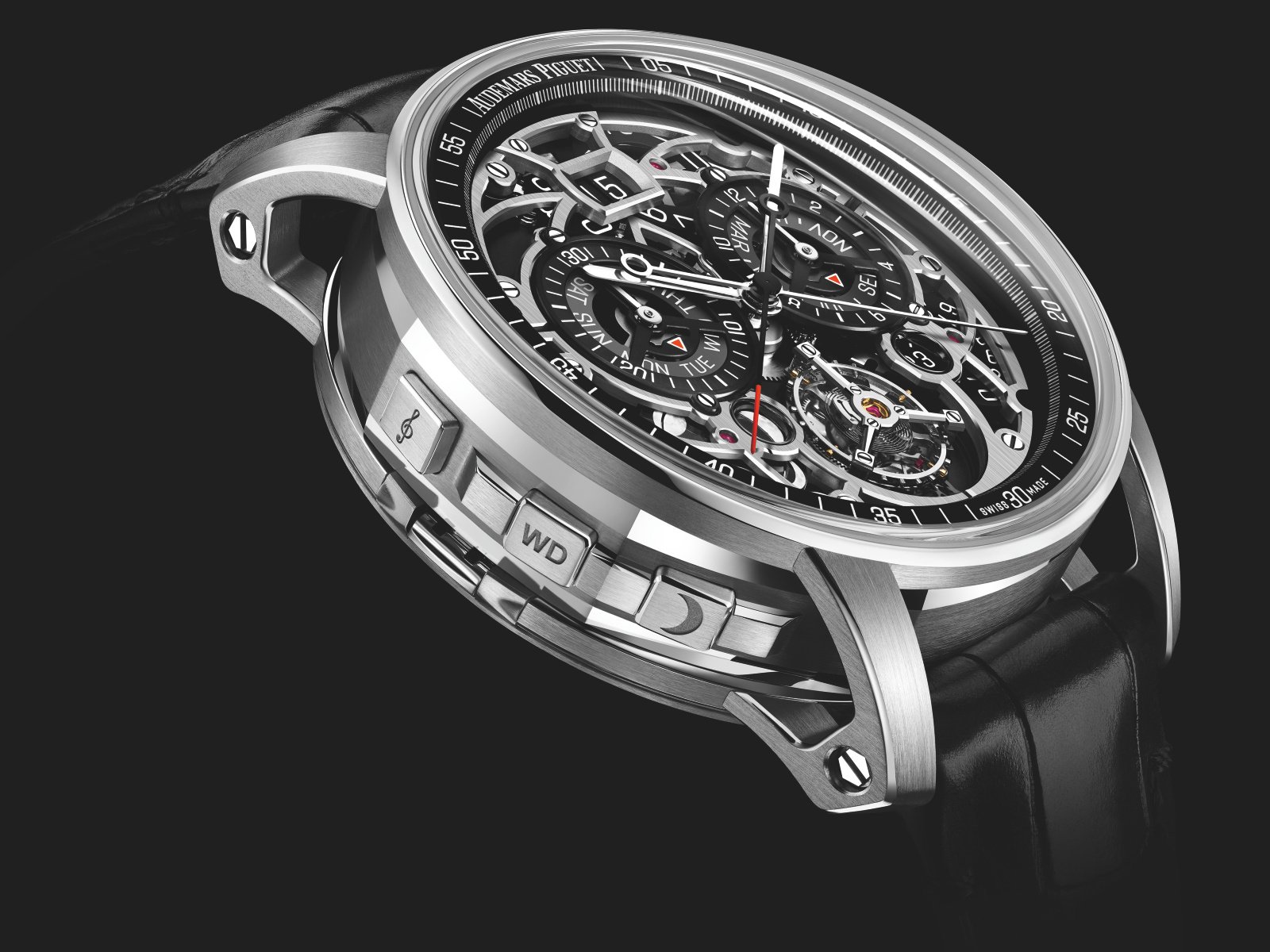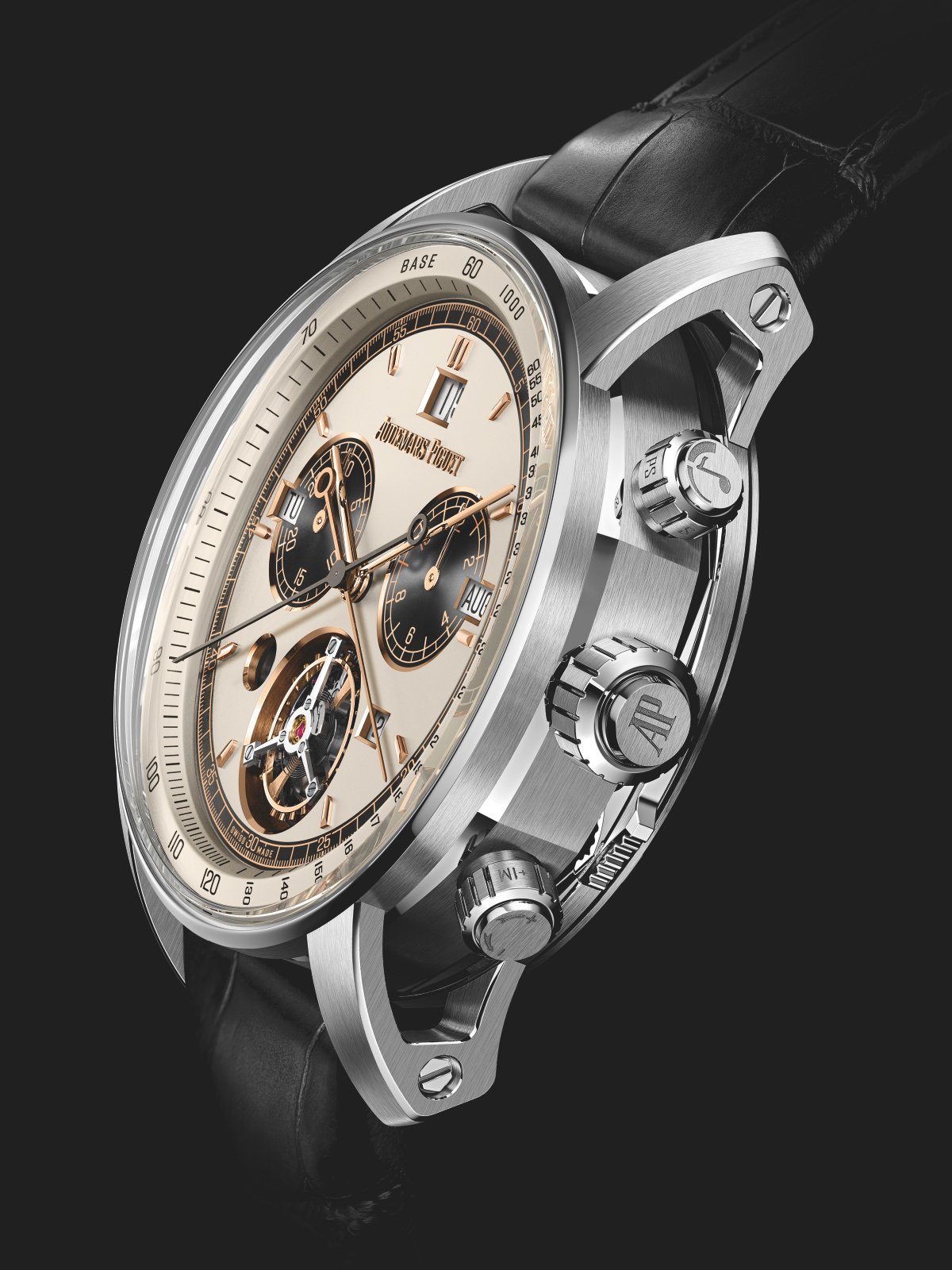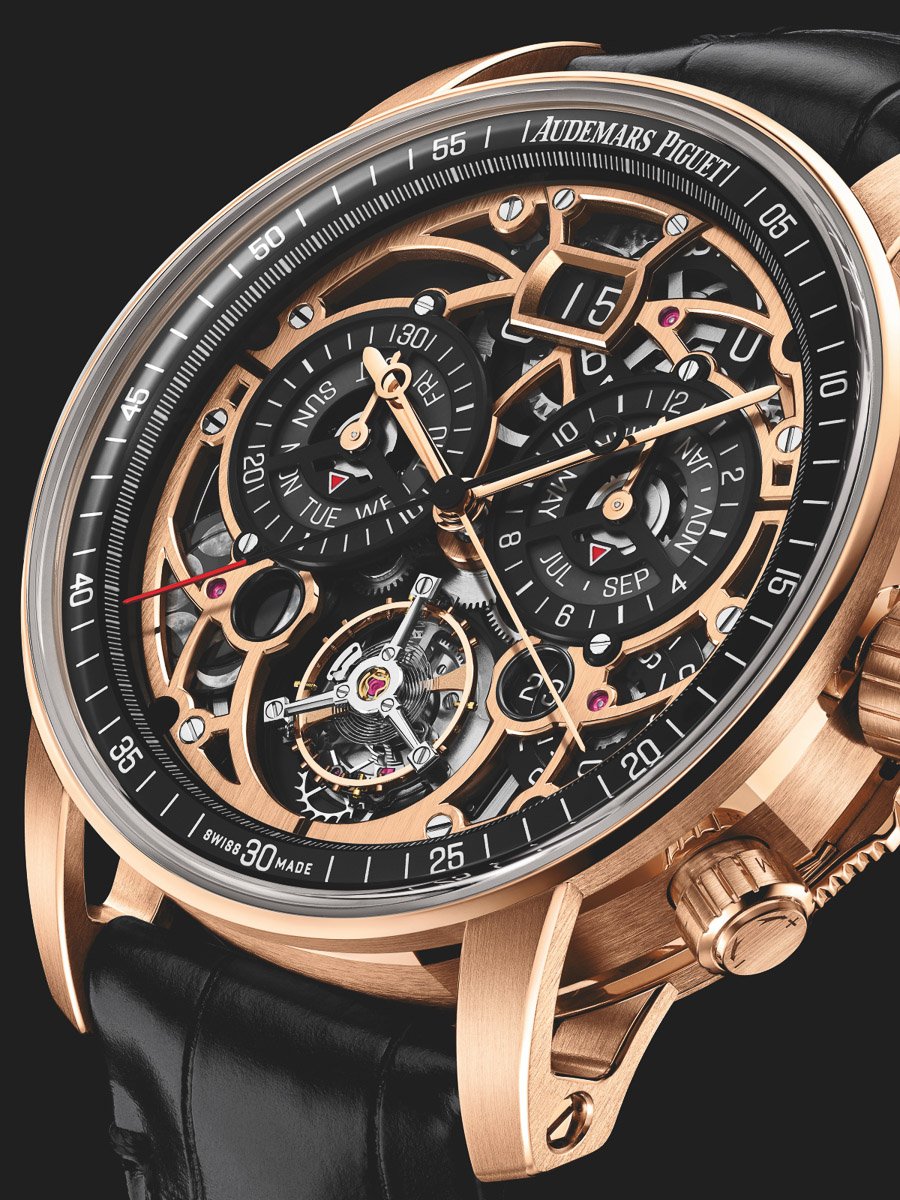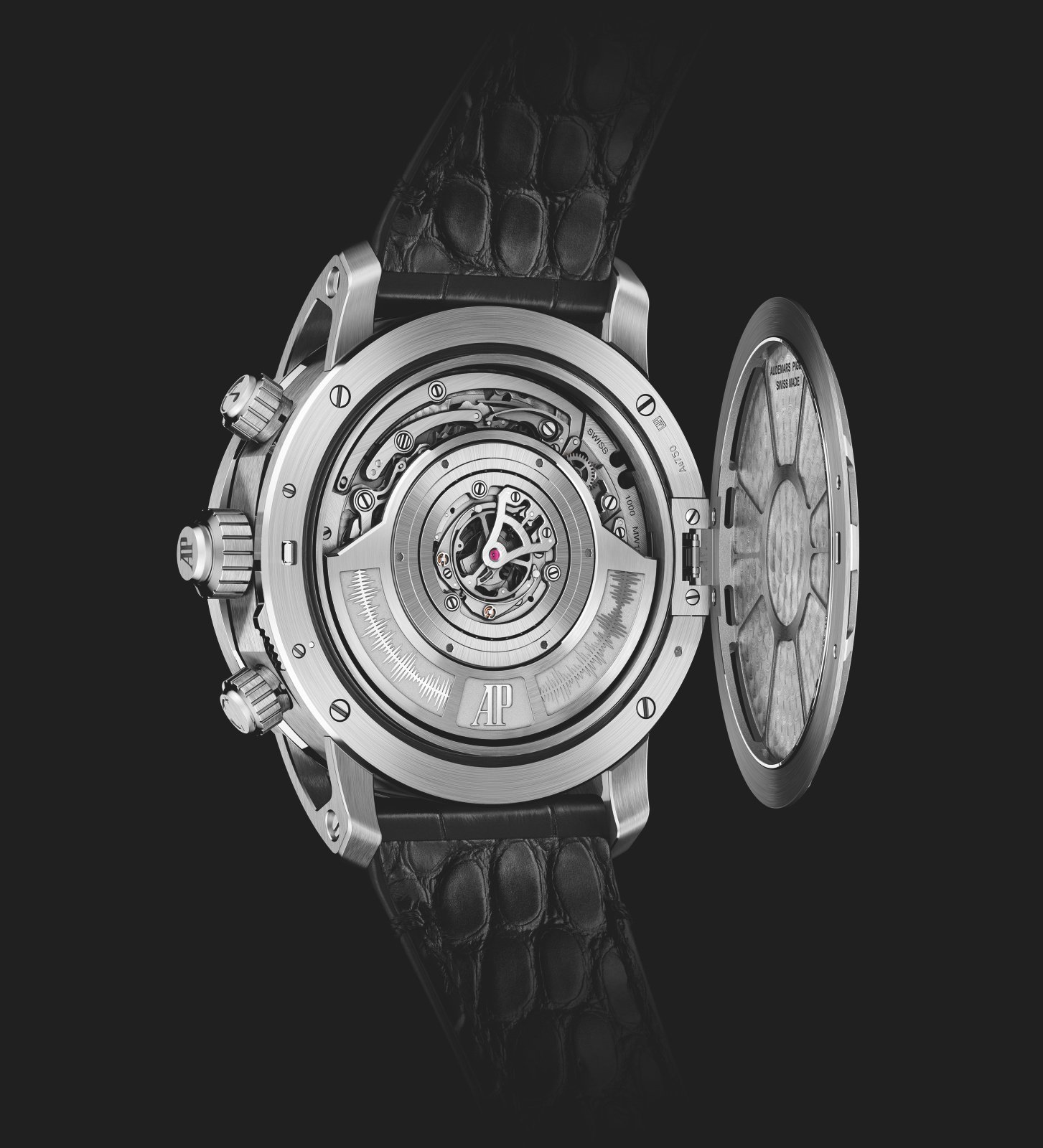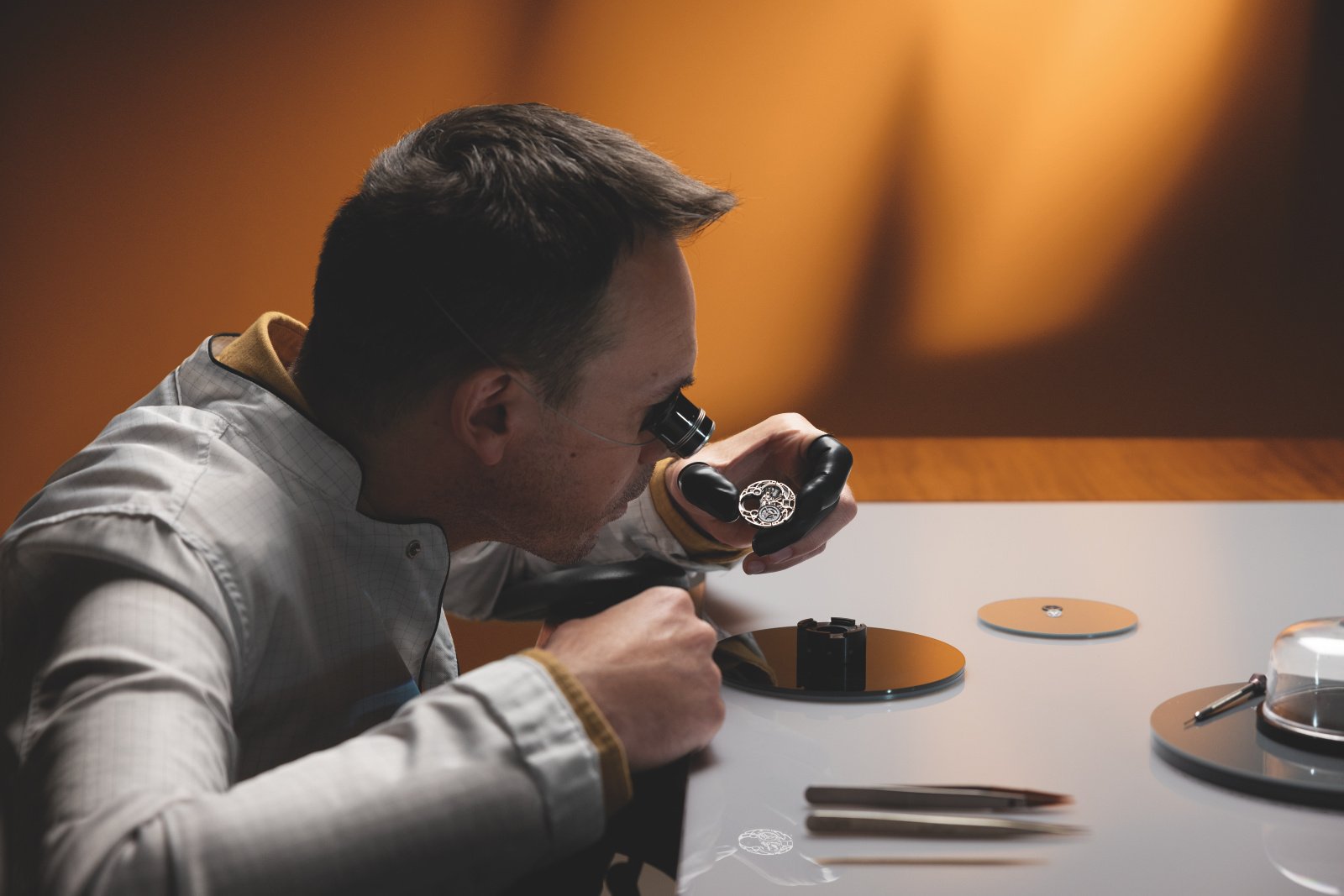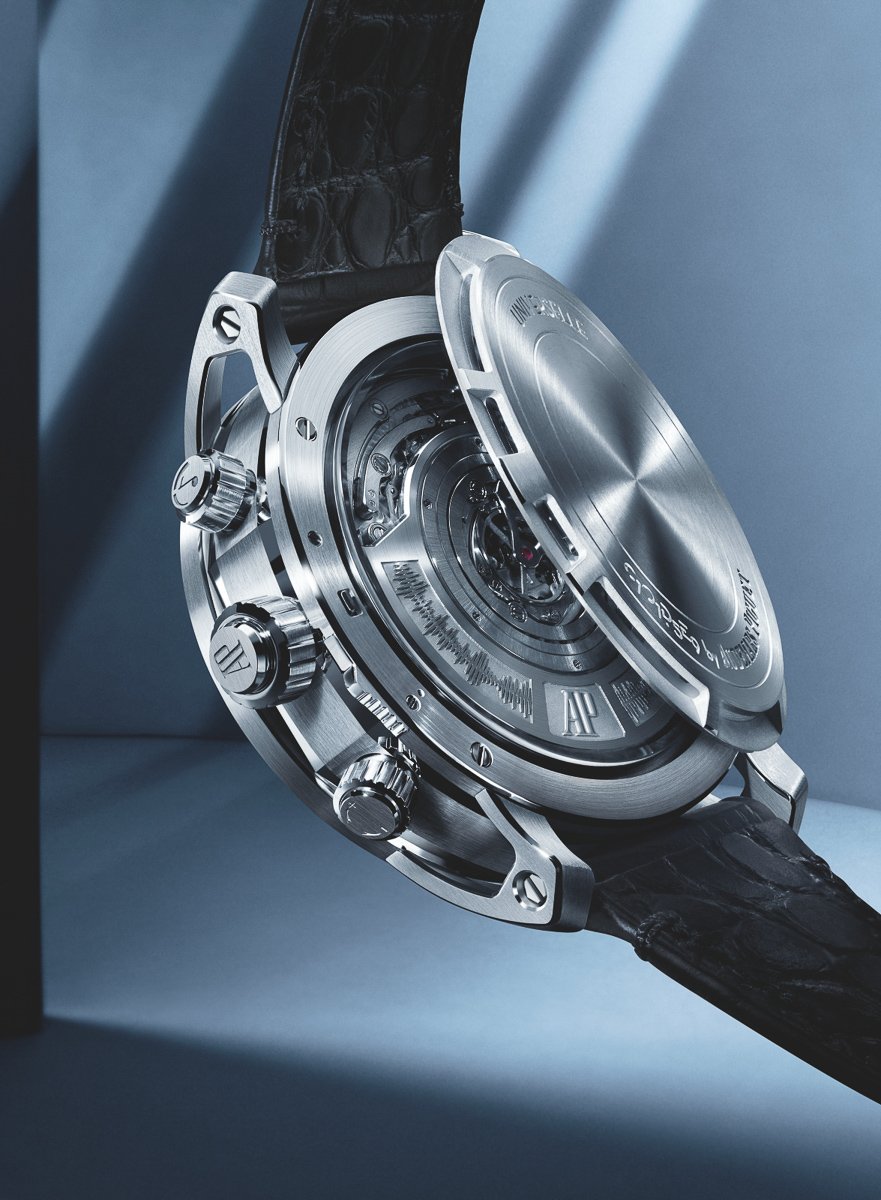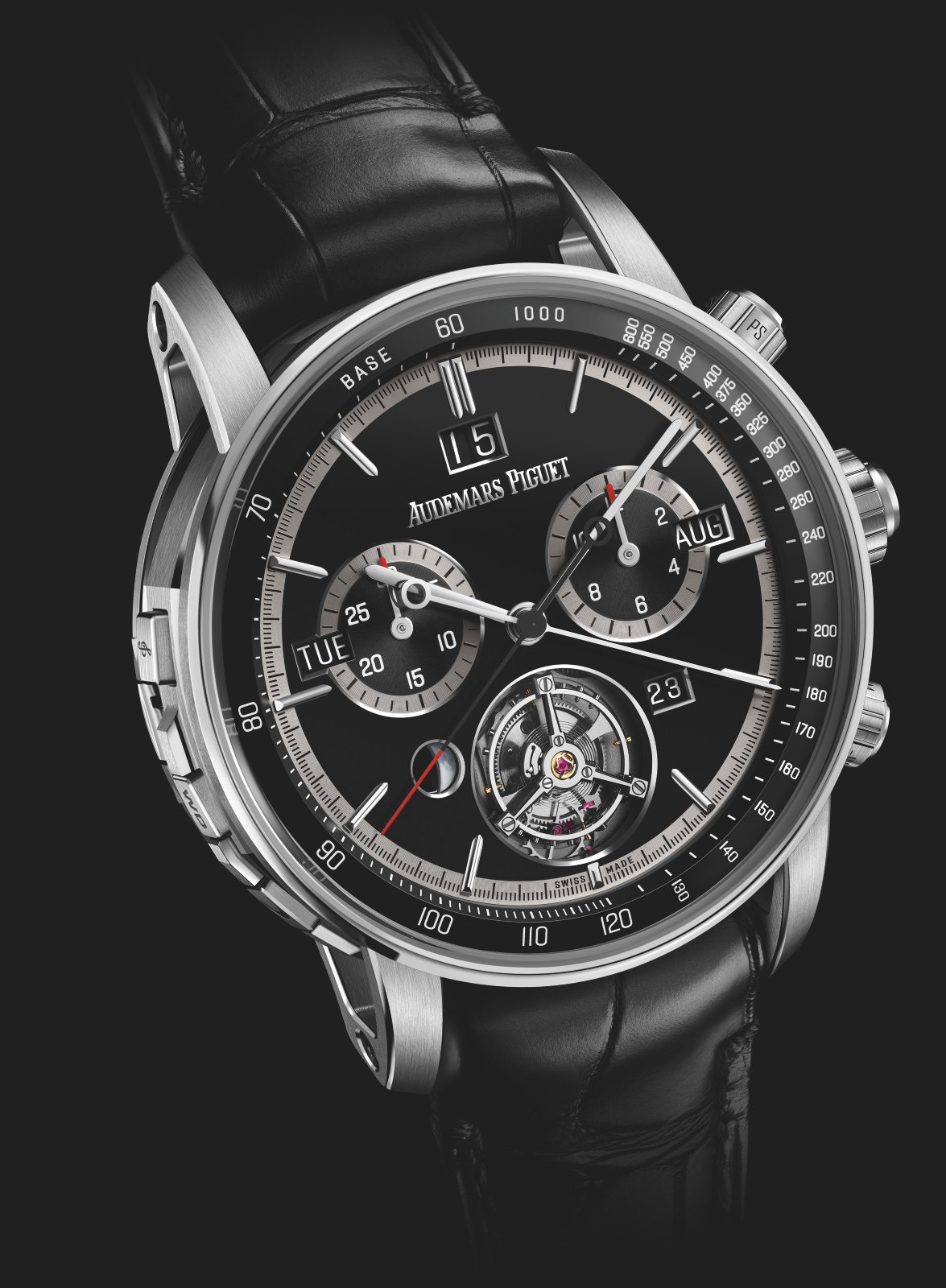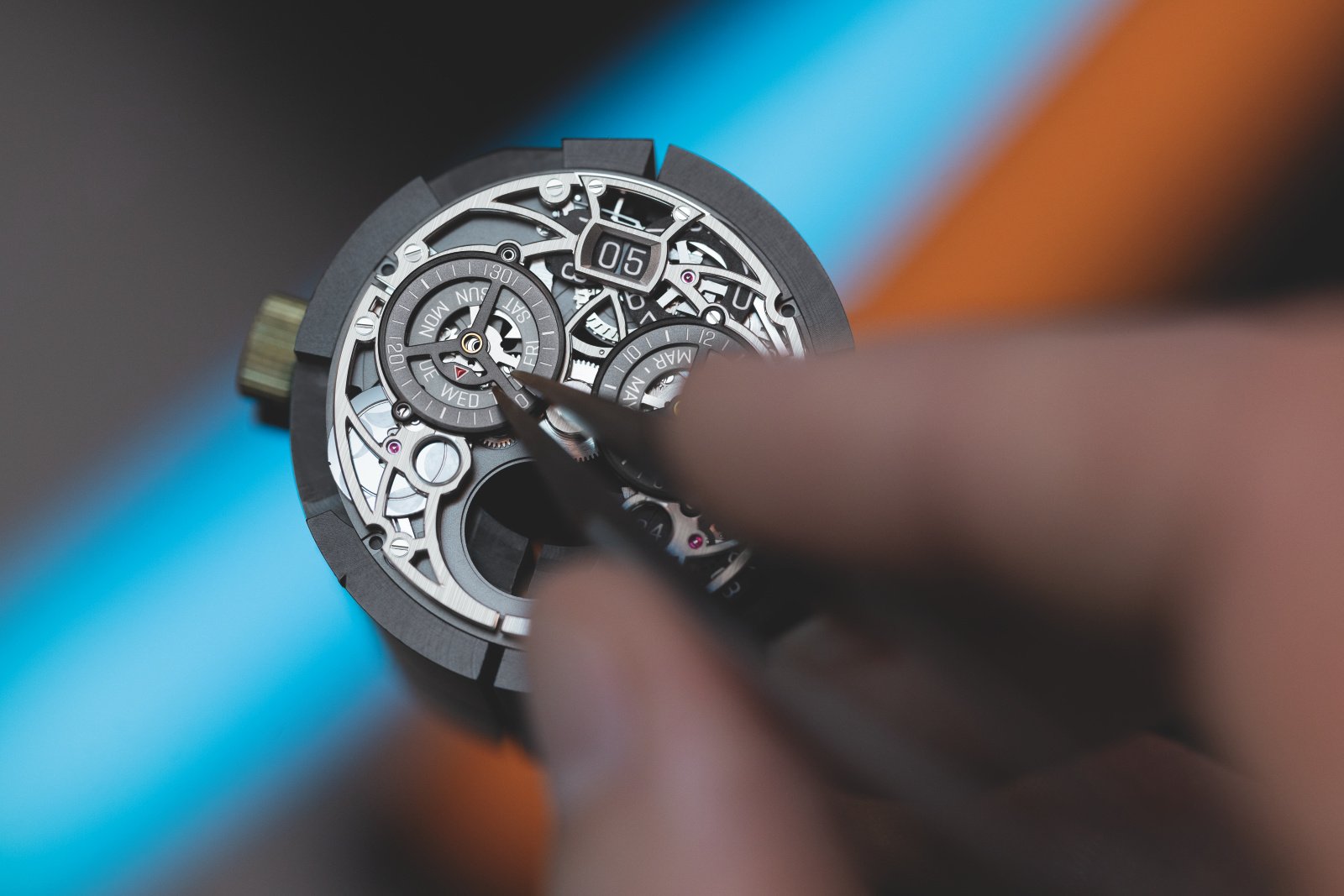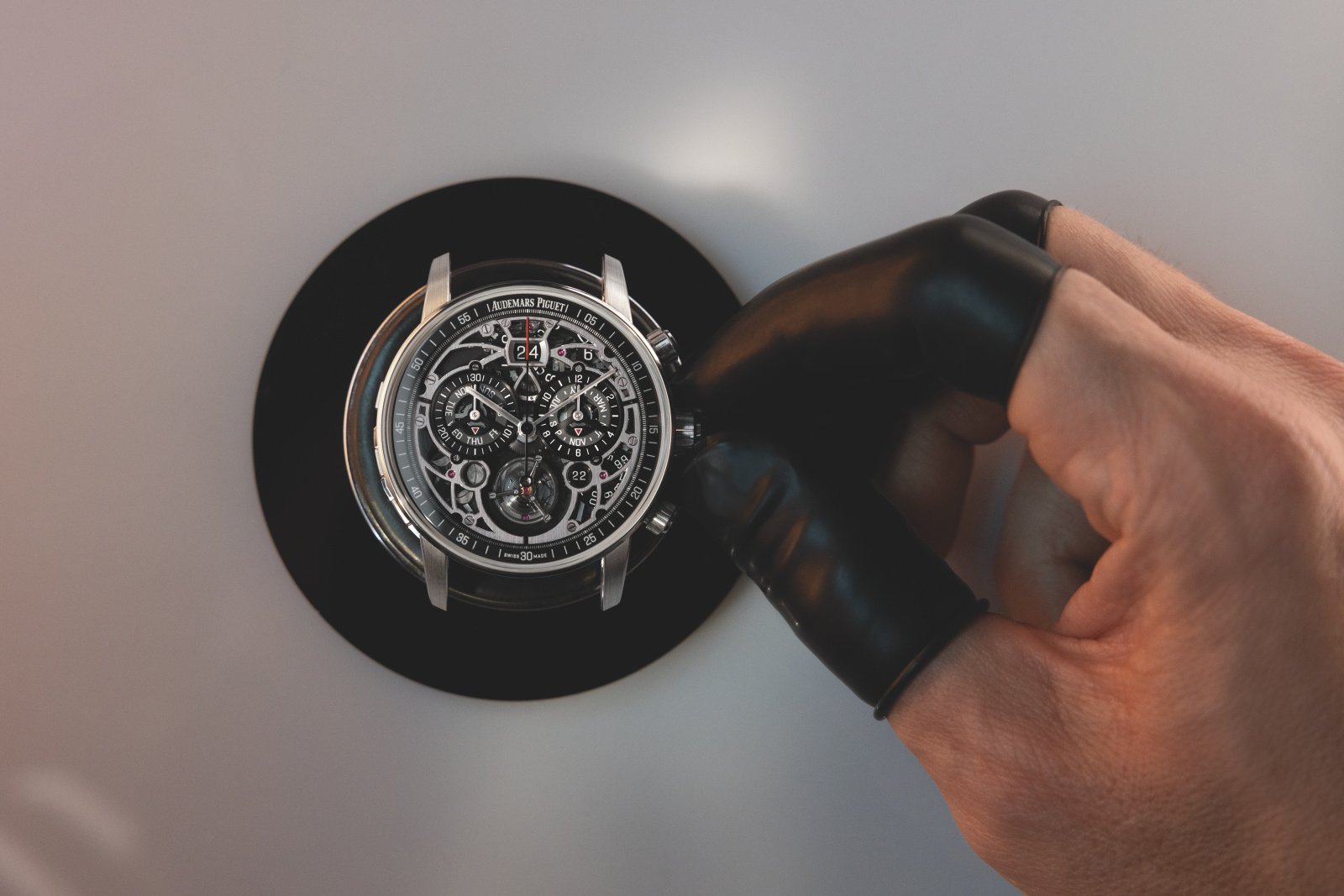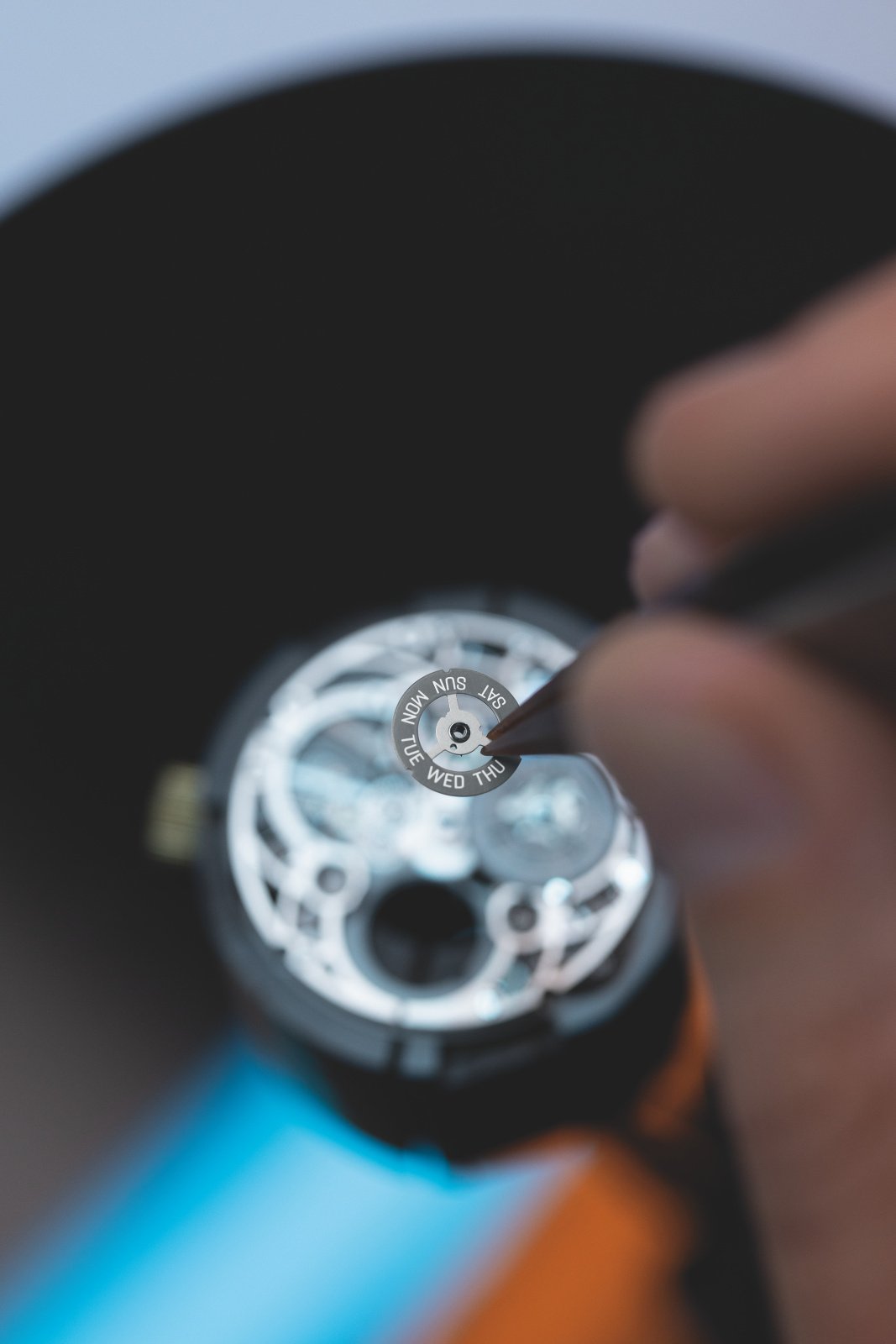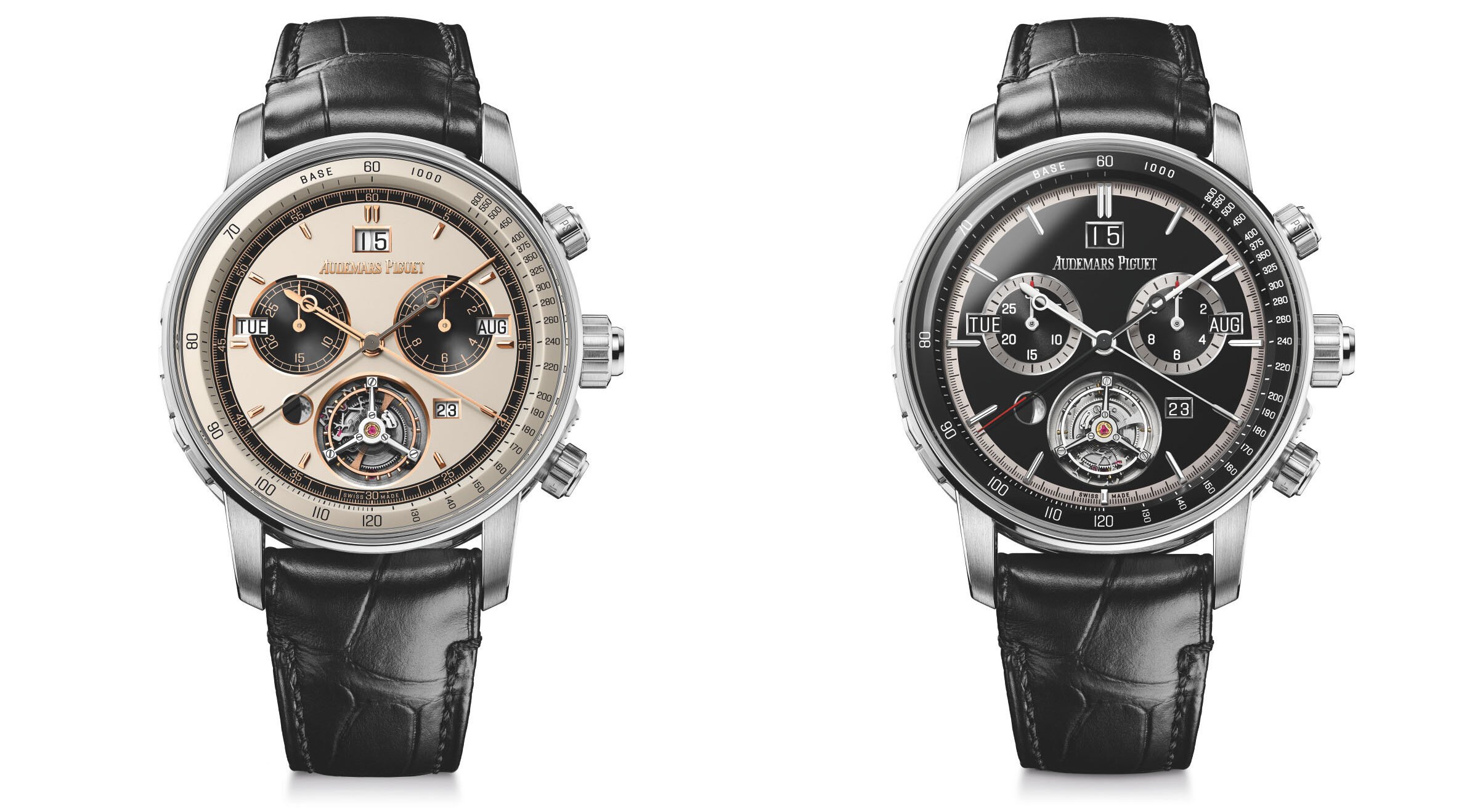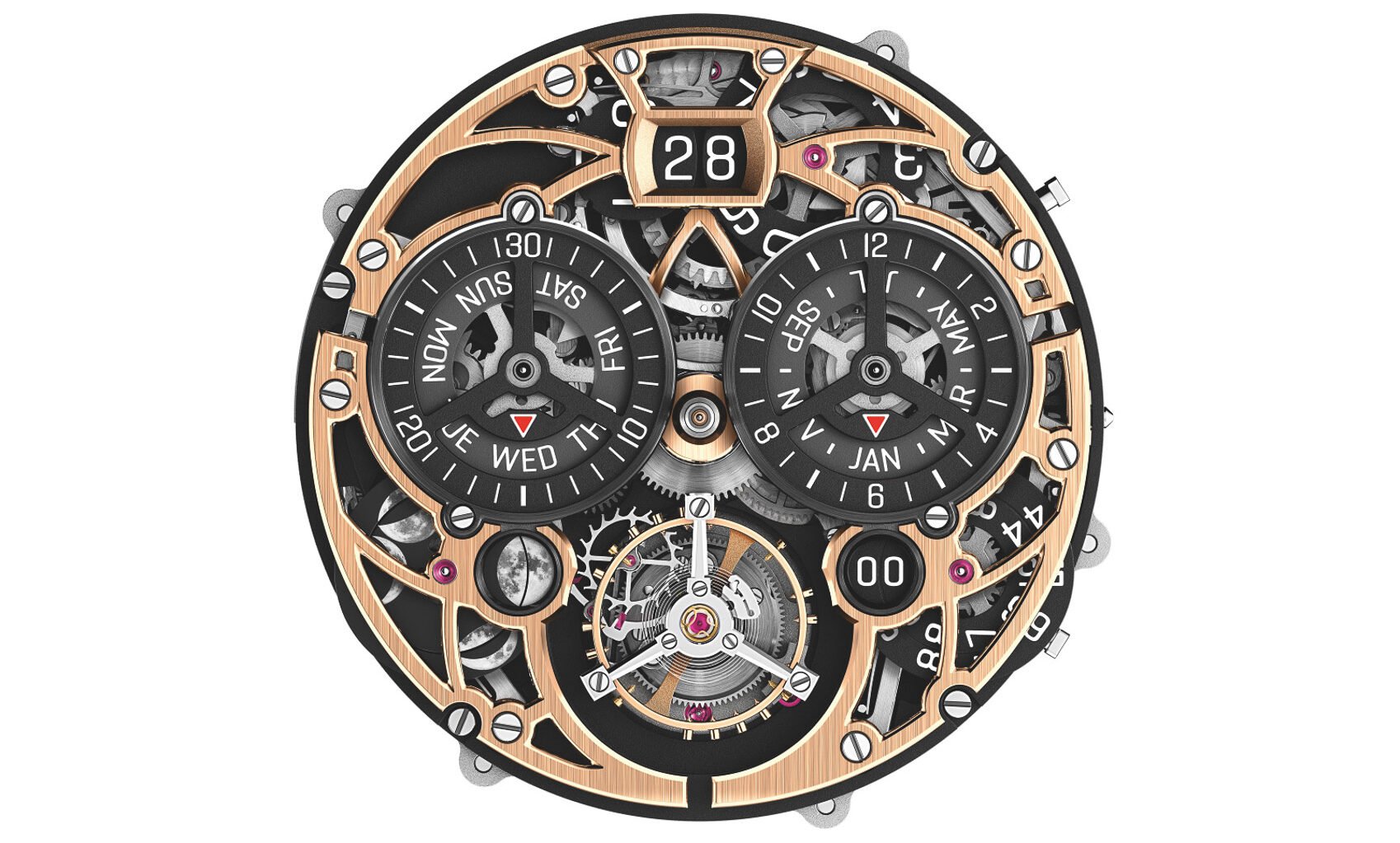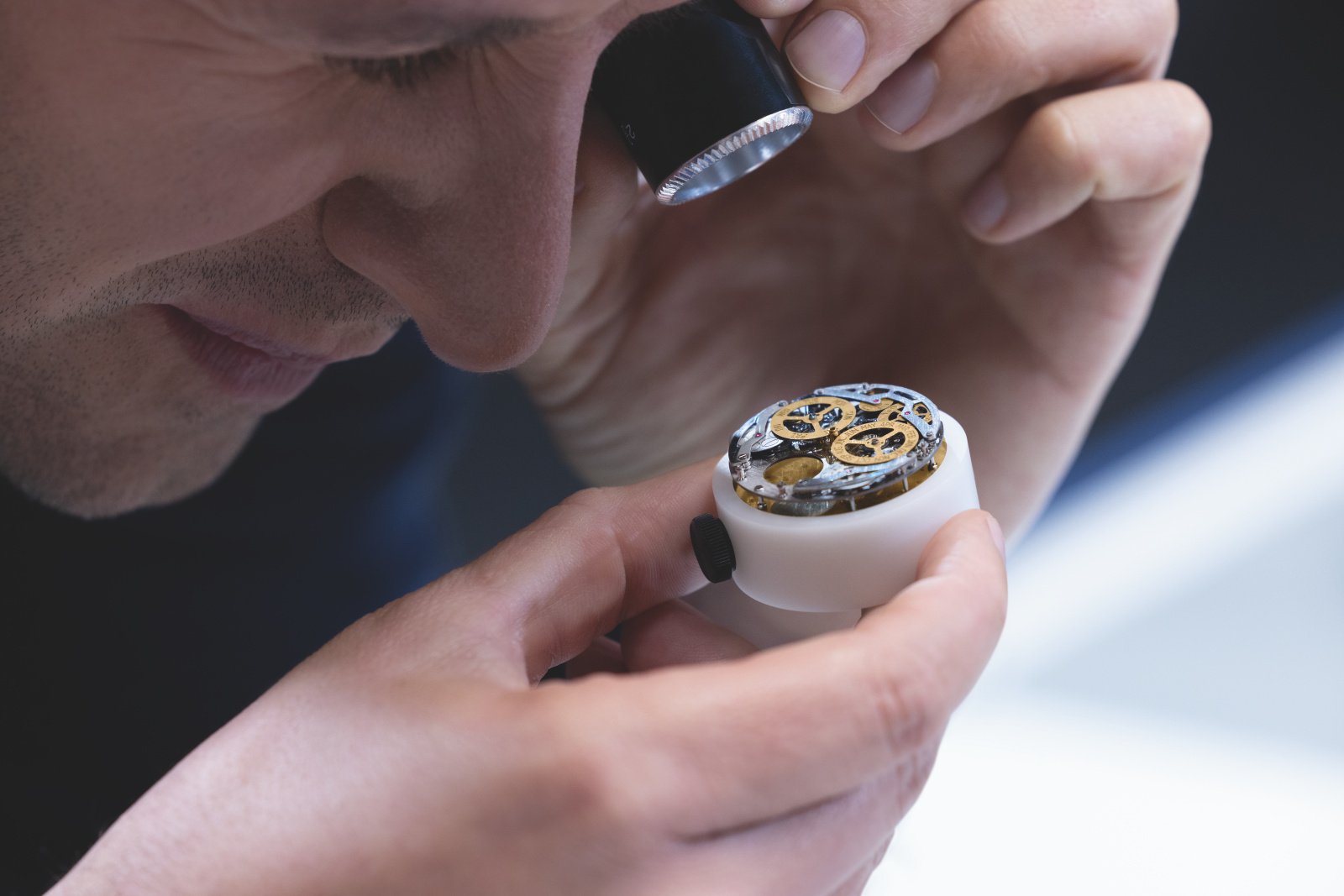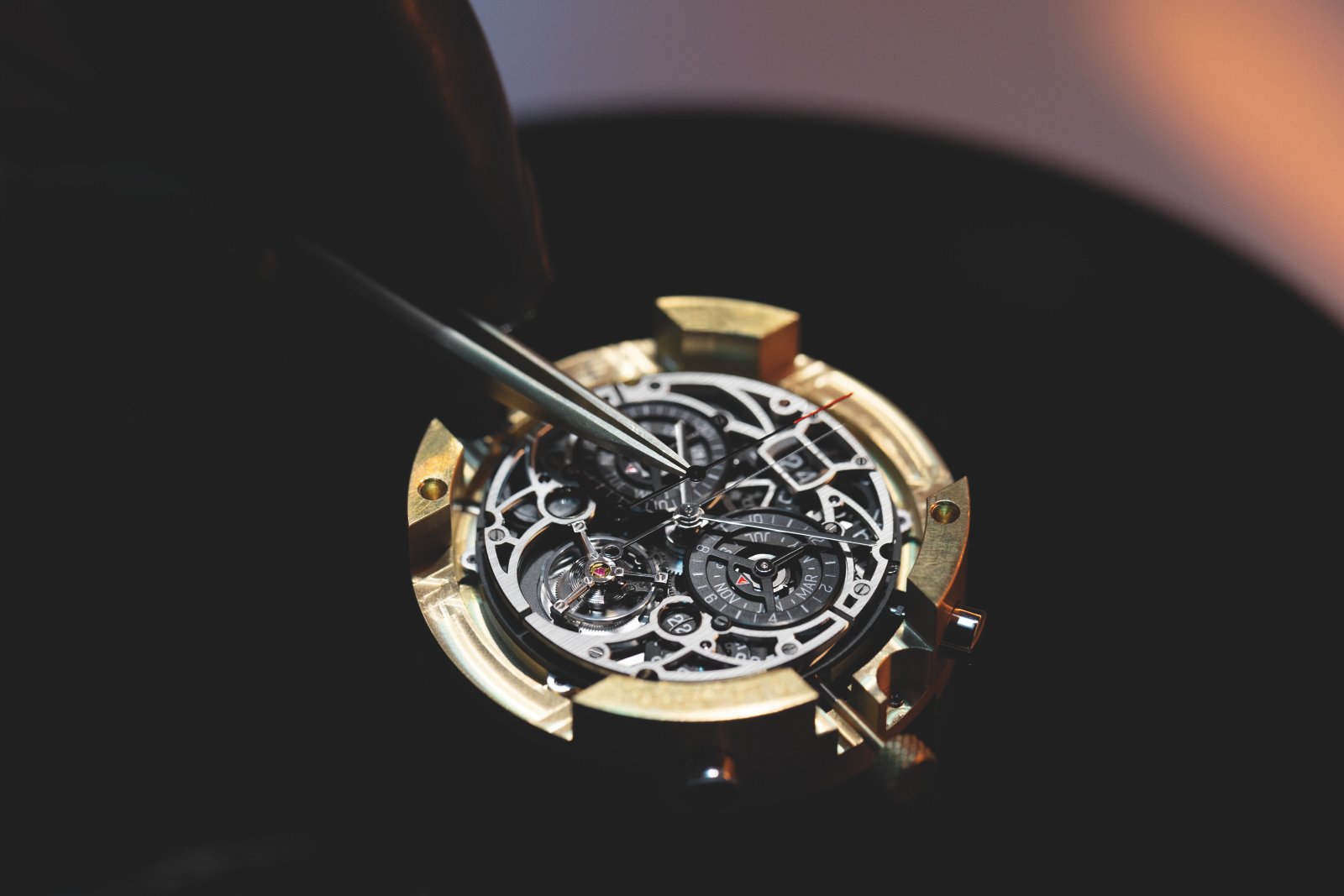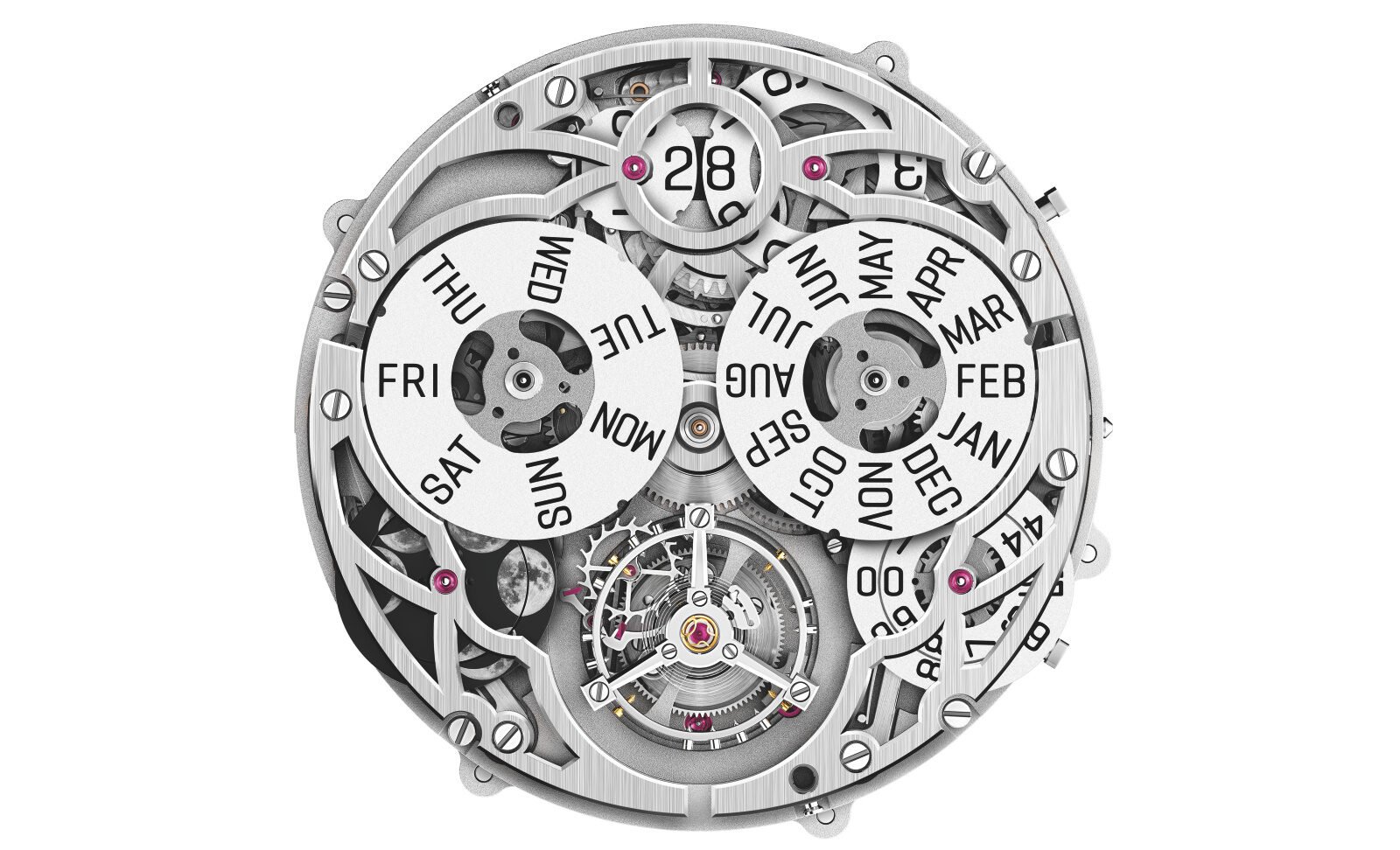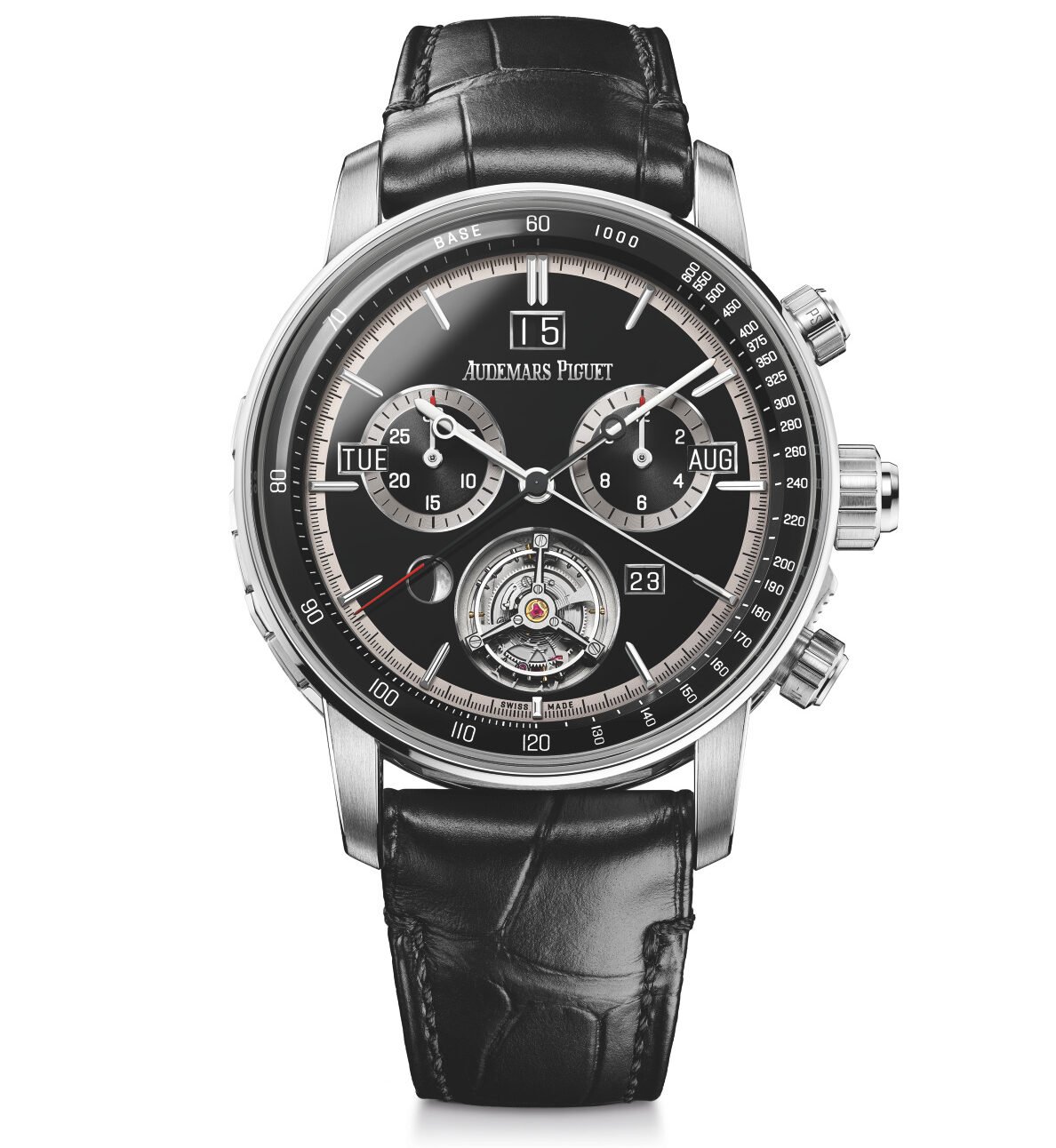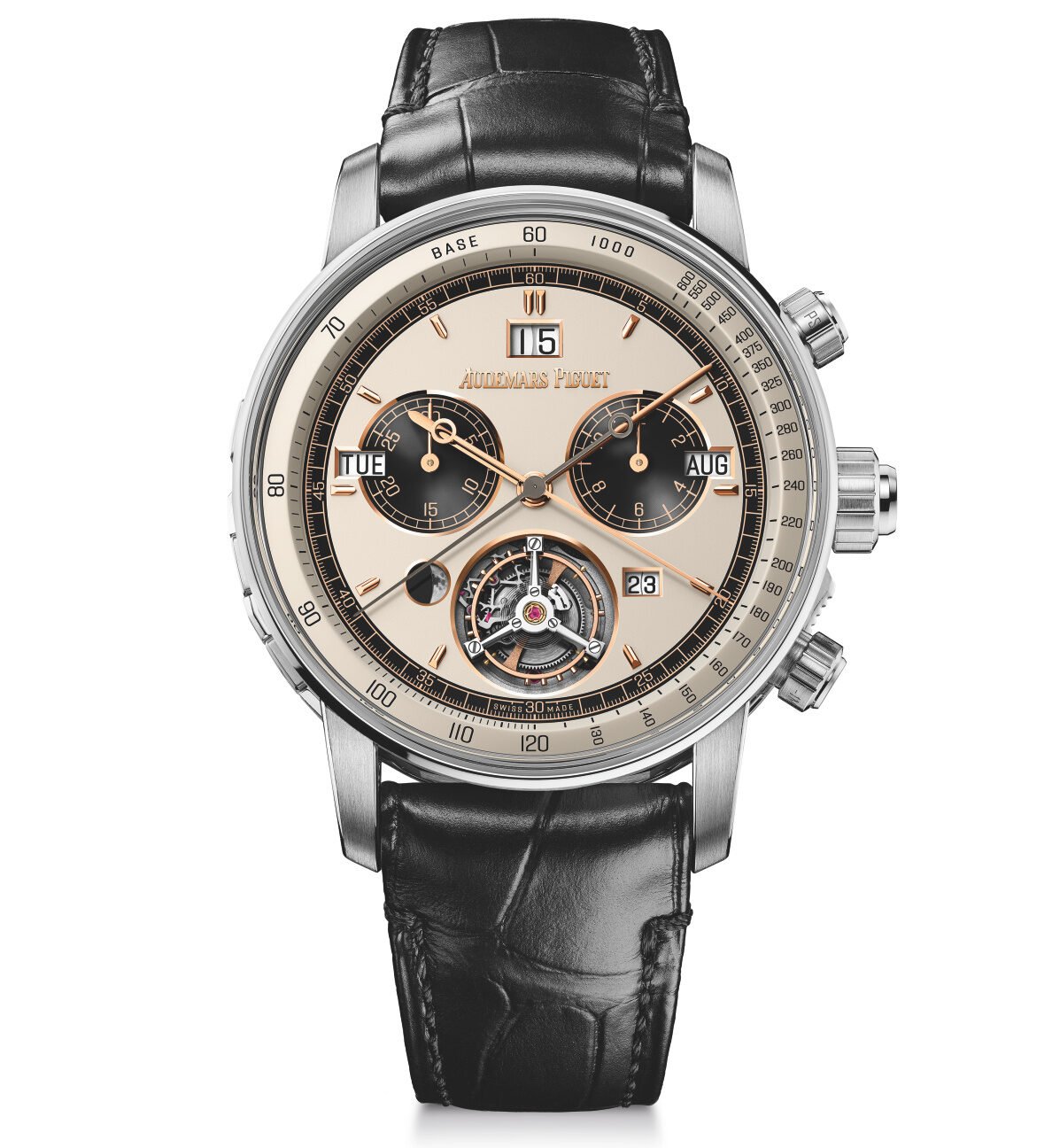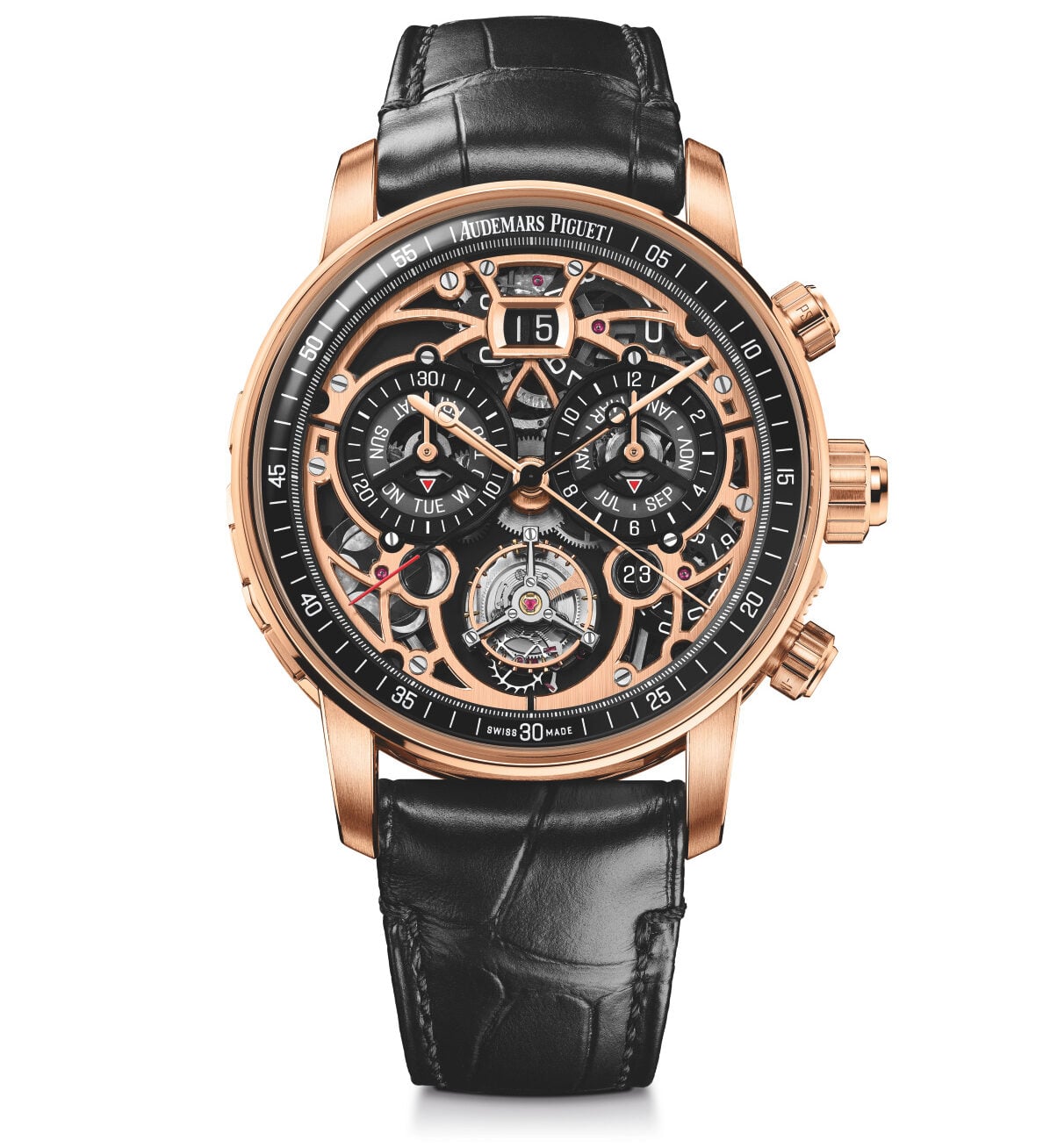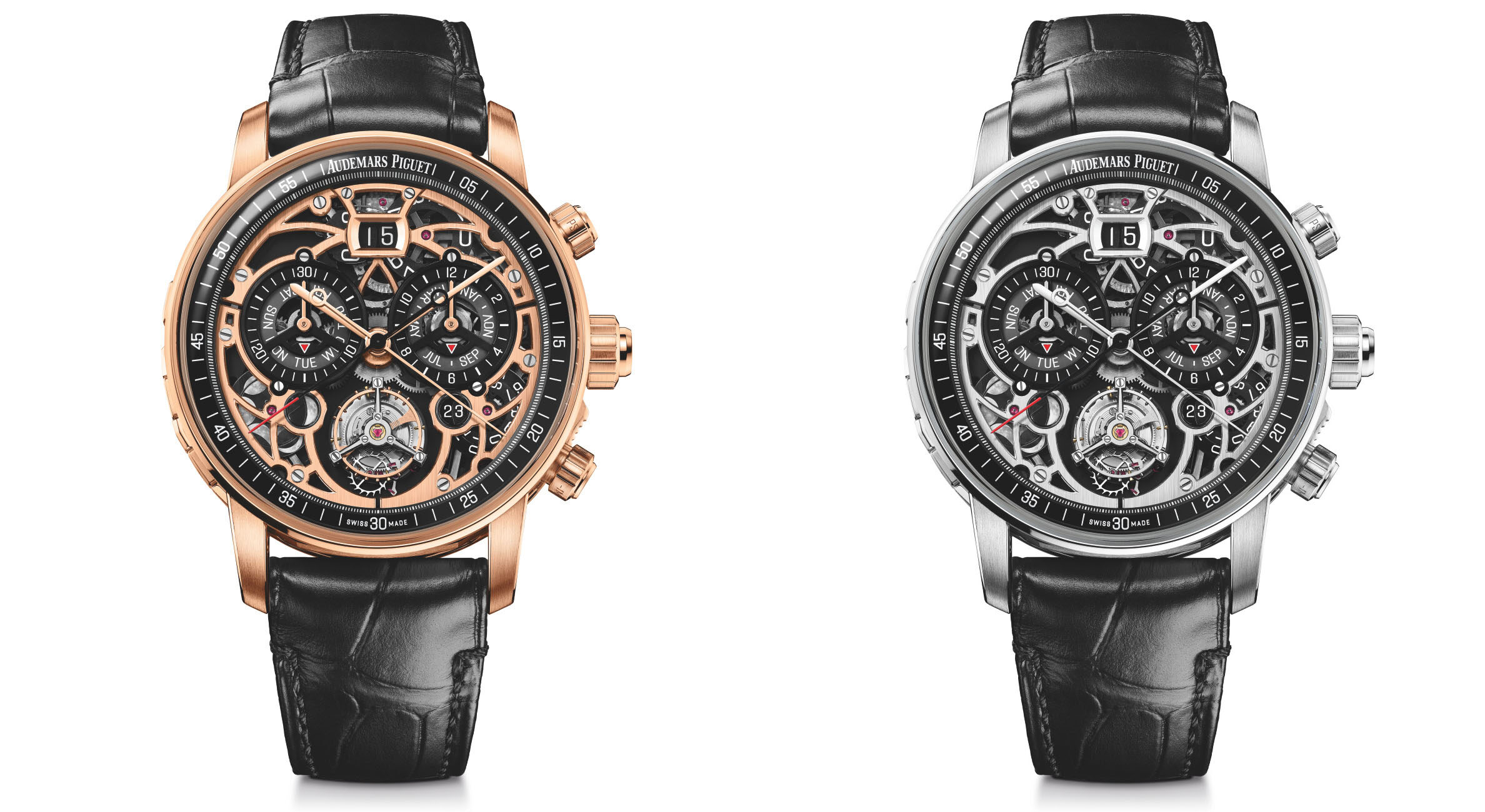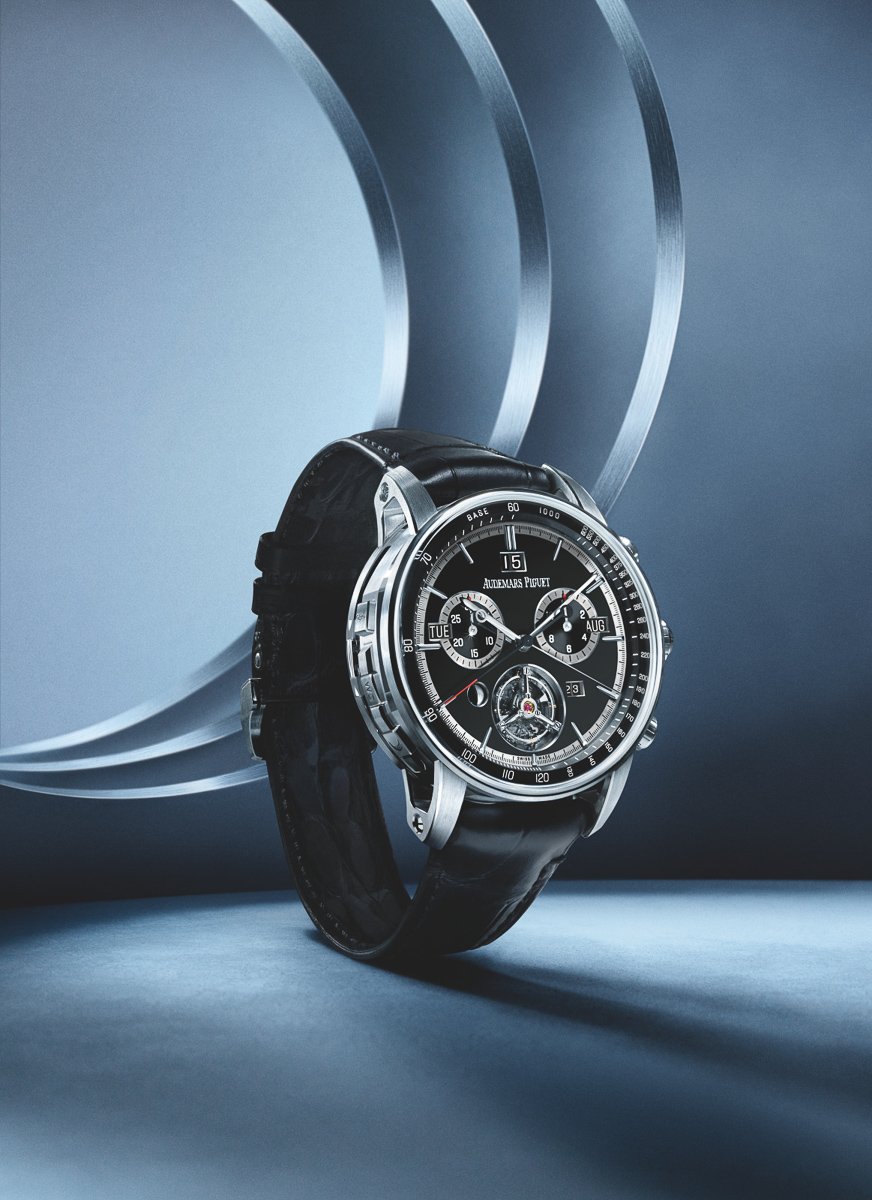Introducing The Mindblowing Code 11.59 By Audemars Piguet Ultra-Complication Universelle RD#4
Sometimes you get confronted with watches that need time to sink in. Watches that need a second and a third look. And after that, you put together the story with the images that come with them. And once you have done that, you still have to grasp the magnitude of what you have just witnessed. These moments are rare, but when they happen, you will recognize them immediately. The introduction of the new Code 11.59 by Audemars Piguet Ultra-Complication Universelle RD#4 is one of those moments. This new timepiece is the most complicated that the brand has ever created. It’s also imbued with contemporary ways of using and experiencing a timepiece. The revolution is here, and it comes in the form of the Code 11.59 Ultra-Complication Universelle RD#4.
The story of the Code 11.59 Ultra-Complication Universelle RD#4 started for me simply with the images of its four different executions. And my enthusiasm was immediately triggered by the colors of the white gold version with the beige dial, black chronograph counters, and a black ring holding the minute track. That combination of colors is simply stunning. I quickly discovered that Nacho and Lex were also visually attracted to the same piece. As it turns out, the colors are only the first sentence of an entire book, one that is captivating and spectacular and tells a remarkable story.
The short story of the Code 11.59 Ultra-Complication Universelle RD#4
Because if you look past the dial and the colors, you quickly realize this watch is a unique masterpiece. Sure, the dial gives away that this is an impressive timepiece. But once you see the images of the sides of the case, you know you’re in for something truly special. If you then see the images of the “secret” case back, it’s time to put words to the images and find out what makes this such a special piece.
The ultra-short story is that this new Code 11.59 by Audemars Piguet Ultra-Complication Universelle RD#4 is the most complicated timepiece the brand has ever created. It introduces the new Calibre 1000, comprised of more than 1,100 pieces. It features 40 different functions, of which 23 are complications. Among them are a Grande Sonnerie Supersonnerie, a minute repeater, a perpetual calendar, a split-seconds flyback chronograph, and a flying tourbillon. The watch is the result of seven years of research, design, and development. The Code 11.59 by Audemars Piguet Ultra-Complication Universelle RD#4 is a unique testament to Audemars Piguet’s legacy of high complications.
The full story started seven years ago
But a story like this one doesn’t just happen overnight. The total development of the RD#4 took seven years. The technical mastermind behind the watch is Giulio Papi, the technical director at Audemars Piguet in Le Locle. He explained during the presentation that the idea for this unique timepiece was triggered by an experience that you might not expect. Papi was impressed by the ingenuity of the usability of the iPhone 6. It sparked the wish to develop a concept for a complicated watch that doesn’t need an instruction manual and doesn’t have a string of pushers and correctors on each side of the case.
It was an ambitious quest to develop a highly complicated timepiece that is not only intuitive to use but also could be a daily wearer due to its ergonomics and its aesthetics. Essentially, you could classify this as the quest for the ultimate timepiece. But where do you start such a monumental project? Papi and his team started in 2016 at the place you might expect the least, the dial. Papi explained that the team knew it would be a timepiece with a round dial and case shape. Mind you, the Code 11.59 was introduced in 2019, so when this project started, the Code 11.59 platform was also in its developing stages. Thus, the combination of the two projects came at a later stage.
Combining the different goals and disciplines
So the team started with the dial design based on a round shape and the different complications that it needed to have. With everyday usability in mind, the design would translate into a dial that stands out because of its brilliant readability. These dials were used for two of the final four timepieces. The brand decided to produce two models with closed dials. The first comes with an opaline black galvanic gold dial, and the second features a stunning opaline beige PVD gold dial with black chronograph counters. The two other pieces feature open-worked dials that give you a glimpse of the unique new Calibre 1000.
But with the integration of the different functions and complications also came the question of how to access and operate them. It resulted in the designers developing ergonomic correctors and crown pushers, allowing users to activate the watch’s multiple functions easily. Regarding the different complications that Audemars Piguet wanted to integrate, Papi revealed that the flying tourbillon was initially not part of the list. But with the clean dial design of the closed-dial versions, there was room to integrate it. On top of that, it would spice up a dial that excels in usability but could use a little visual sparkle. It’s just one of the many remarkable details of this enormous project. The result is a truly unique watch that is nothing short of impressive.
Combining the elements into the Code 11.59 Ultra-Complication Universelle RD#4
By now, you might be thinking, “Hit us with some specs!” And you’re right. Just reading the list of specifications will shine a light on the watch itself and the grandeur of the project. So the four watches feature a newly developed Code 11.59 case that measures only 42mm in diameter and 15.55mm in thickness. Yes, you read that correctly; this watch is actually very wearable. The case has kept its typical Code 11.59 architecture with its overall round shape, characteristic octagonal mid-case shape, open-worked lugs, and its signature curves. The proportions of the new case were slightly altered to fit the ultra-complicated Calibre 1000.
The new Calibre 1000 is an ultra-complicated self-winding movement comprised of over 1,100 components. It incorporates 40 functions, including 23 complications as well as 17 special technical devices. Among them are Audemars Piguet’s most recently introduced R&D innovations presented in its three RD# predecessors. The first is the Supersonnerie technology unveiled in 2015 with the Royal Oak Concept RD#1. The second is the ultra-thin perpetual calendar mechanism presented in 2018 with the RD#2. That resulted in the Royal Oak Selfwinding Perpetual Calendar Ultra-Thin model that was introduced in 2019 and sees its newest iteration released today as well. The third R&D innovation in this watch is the oscillator with an increased amplitude. This was unveiled on the two Royal Oak Selfwinding Flying Tourbillon Extra-Thin RD#3 models last year.
Integrating the latest Audemars Piguet R&D developments
On top of integrating its latest R&D developments, the Manufacture combined them with some of the most complex and prestigious complications. The result is a single movement that measures only 34.3mm in diameter (15 lignes) and 8.75mm in thickness. But how do you create something so complex and make it easy to use? The answer to that question was reducing the number of pushers and correctors we usually find on the side of cases of highly complicated timepieces. Audemars Piguet combined the operation of the functionalities into three crowns and three push pieces that grace the sides of the case.
The push-pieces are on the left side of the case and stand out because of their modest size and flawless integration into the side. The top pusher activates the minute repeater. The middle and lower pushers correct the moonphase and day indications. With these new pushers, gone are the days of using annoying, sharp tools to push the minuscule correctors we usually see on the sides of complicated watches. So full credit to Audemars Piguet for developing a way of correcting the different functions. It massively improves the ease of use and makes the sides look a lot better.
Ingenious solutions for intuitive use
The watch features three crowns with coaxial pushers on the right side of the case. The large central crown at 3 o’clock allows the wearer to wind the watch and set the time and date. On top of that, it enables you to select the chiming mode that switches between Grande Sonnerie, Petite Sonnerie, and silence mode. The crown-pusher or so-called “supercrown” at 2 o’clock starts and stops the flyback chronograph mechanism.
The second “supercrown” at 4 o’clock resets the chronograph with a push. That same pusher also corrects the month in sync with the year by turning the crown 70 degrees forward or backward. After correcting, the crown returns to its neutral position. It goes without saying that this innovation makes it super easy to use and almost hides the difficult technical solution that makes this possible. Lastly, the pushers and crowns feature small engraved symbols reminding you of the different functions.
The chiming mechanism is truly next level
We can agree that the ease of use for the different functions is truly spectacular. The simple ways of operating the watch make it a massive achievement alone. But that is definitely not where it ends because the different functions and complications also need to be integrated into one movement. On top of that, the team at Audemars Piguet strived for nothing but the absolute best. A great example is the chiming mechanism. It combines a Grande Sonnerie with the patented Supersonnerie technology that the brand introduced in 2015.
As mentioned, you can switch between Grande Sonnerie, Petite Sonnerie, and silence mode. The Grande Sonnerie mechanism strikes the hours and every quarter-hour in passing without any involvement of the wearer. When the Petite Sonnerie mode is activated, the watch automatically chimes the hours only. In silent mode, automatic chiming is switched off. Additionally, the minute repeater is activated separately through the pusher at 10 o’clock. All of the chiming functions are powered by a dedicated barrel that is wound alternately with the main barrel by moving the watch on the wrist.
Integrating a new Supersonnerie mechanism
Audemars Piguet’s integration of the patented Supersonnerie mechanism ensures the superior tone and quality of the chiming mechanism. It attaches the gongs no longer to the main plate but to a separate component that acts as the soundboard. For the RD#4, the construction was revised, and the engineers and watchmakers wanted to make the mechanism visible to reveal its beauty. It triggered the development of a double case back system with a “secret” extra-thin cover and a new 0.6mm-thick soundboard completely made out of sapphire crystal that holds the gongs. It took three years to develop this sapphire crystal component with exactly the right geometry and thickness to act as the soundboard.
This “secret” cover features a series of openings to let air through and boost the sound when the watch is worn on the wrist. As a result of hollowing out the cover, the impact on the overall thickness of the case is minimal. Opening the cover is easy, thanks to a lever just under the large crown at 3 o’clock. By opening it, you get a great view of the split-seconds mechanism and the platinum oscillating weight. You will also be able to admire the exquisite level of finishing. It’s something that Audemars Piguet is known for, but the level of detail is simply impressive. As you can see, the oscillating weight features engraved sound waves, hinting at the special acoustics of the timepiece.
Adjusting the perpetual calendar mechanism of the RD#4
For the perpetual calendar functions, the development team altered and integrated the ultra-thin perpetual calendar mechanism of the brand’s Calibre 5133. The movement premiered in 2018 with the release of the Royal Oak Selfwinding Perpetual Calendar Ultra-Thin RD#2 prototype. And together with the release of the RD#4, we also see the introduction of a new version of its successor, the Royal Oak Selfwinding Perpetual Calendar Ultra-thin. Several changes and optimizations were implemented into the new timepiece to ensure the usability was improved and on point with the project’s overall goal.
The record-breaking ultra-thin movement saw the merging of the perpetual calendar functions onto a single level. The end-of-the-month cam has been similarly integrated into the date wheel. At the same time, the month cam has been combined with the month wheel. For even greater simplicity in usability, a large date indicator is integrated at 12 o’clock, and the year indicator can be found at 4 o’clock.
Simpler operation leads to a more beautiful dial
As I already explained, a big change is that the correction system for the calendar functions has been made easier to use. The day and moon indications are corrected with the dedicated middle and lower pushers on the left side of the case. The date can be corrected forwards and backward by turning the large crown at 3 o’clock in either direction. And as explained, the same goes for the date indicator by turning the “supercrown” at 4 o’clock.
Remember when I talked about the development team starting with the dial design? As a result of making the calendar functions easier to adjust, the placement of the different elements leads to a clean dial. The two closed-dial versions in particular do not lead you to believe that you are dealing with an ultra-complicated timepiece.
No manual corrections are needed until the year 2400
As you can see, all of the calendar functions are clearly visible and do not interfere much with the chronograph registers. The day indicator is placed at 9 o’clock, the large date window at 12 o’clock, and the month indicator at 3 o’clock. Additionally, the year indicator is located next to the 4 o’clock marker, replacing the traditional leap-year indicator.
As you’d imagine from a perpetual calendar, the year indicator changes automatically every time the month moves from December to January. Thus, the perpetual calendar mechanism automatically advances the day, date, month, and year. It takes the number of days per month, including leap years, into account. Lastly, the 100-year correction normally required in traditional Gregorian perpetual calendars is also considered. It results in a perpetual calendar that does not need manual adjustment before the year 2400.
The RD#4 depicts a realistic moon
In the last step of the perpetual calendar, the moonphase indicator is integrated at 8 o’clock. Despite its different shape, it is placed in sync with the year indication at 4 o’clock. The innovative instant-jump moon system shows a realistic depiction of the moon. To create it, two concentric discs that feature six printed moon positions combine to form ten different images. These images represent the transitory waxing and waning stages between the new and full moon. The new moonphase indicator requires manual correction just once every 122 years if the watch is kept fully wound.
The architecture of the chronograph of the RD#4 was adjusted
In the next step, the architecture of the flyback chronograph was also adjusted. Besides integrating it into the movement, the goal was to save space to keep the case as slim as possible. Secondly, the Audemars Piguet team wanted to ensure that the wearer could view the usually hidden parts. In one of the biggest steps, the split-seconds mechanism was integrated within the thickness of the central rotor’s ball bearing. By making that possible, the engineers could reduce the movement’s thickness by 1.1mm. Additionally, if you open the “secret” cover, you get a good view of the mechanism.
As mentioned before, operating the chronograph is very easy. The pusher at 2 o’clock starts and stops the chronograph. The big crown at 3 o’clock activates the split-seconds mechanism. Lastly, the pusher at 4 o’clock activates the flyback and zero-resetting mechanisms. Besides that, the chronograph functions are very easy to read on the dial. The designers chose to increase the size of the hour and minute counters. Next, they are placed slightly above the 3 and 9 o’clock markers. This gives the flying tourbillon cage at 6 o’clock more room to breathe.
The flying tourbillon from the RD#3 Royal Oak Selfwinding Flying Tourbillon Extra-Thin models
Speaking of the flying tourbillon, AP’s Calibre 1000 features a new oscillator with increased amplitude. The oscillator optimizes energy distribution and efficiency. Audemars Piguet presented this innovation for the first time last year on the two RD#3 Royal Oak Selfwinding Flying Tourbillon Extra-Thin models. To ensure that the watch keeps working when all functions are active, the geometry of the escapement has been redeveloped. It increases the amplitude of the balance and eliminates “knocking,” a phenomenon that occurs when excessive energy is transferred from the escapement to the oscillator.
It was also necessary to increase the energy of the base movement to keep the frequency at 21,600vph and create a magical image of the flying tourbillon on the dial side. Therefore, a larger main barrel was created to power the hands, the chronograph, and the perpetual calendar functions. As mentioned, the chiming complications are powered by a separate dedicated barrel. As a result, the movement has an approximate power reserve of 64 hours.
The four different versions of the Code 11.59 Ultra-Complication Universelle RD#4
This brings us back to the beginning of this article. As I mentioned, the dial was the starting point of this project. And overall, a glance at it will determine whether you like the watch or not. With the four Code 11.59 Ultra-Complication Universelle RD#4 models, you can choose four distinctly different watches. The first combines an 18K white gold case with an opaline black galvanic gold dial. The hour markers and the brand’s logo are executed in white gold. Hints of color come from the red tips of the chronograph’s hands. These hover above the light gray outer rings of the chronograph registers and the dial that holds the minute track.
The second, my absolute favorite, also comes with an 18K white gold case. It features an opaline beige PVD gold dial with black chronograph counters and a black outer ring with pink gold details. The dial features 18K pink gold hour markers and hands that correspond nicely with the pink-gold-toned balance wheel visible through the flying tourbillon cage. As you can see, the dials of these two versions stand out because they are balanced and extremely easy to read. I absolutely adore the lighter version as it offers an aesthetic we do not see often. The combination of beige, pink gold, and black is an absolute winner.
The two open-worked versions of the RD#4
If we move on to the third model, it features an 18K white gold case and an open-worked dial that offers a glimpse of the brilliant Calibre 1000. The skeletonized white gold bridges are contrasted with black accents. As you can see, the gray day and month indicators are integrated into the black chronograph counters. Red accents come from the tip of the central chronograph hand and the day and month indicators.
Lastly, a similar model is executed with an 18K pink gold case. The open-worked bridges are also executed in pink gold and contrast nicely with the black accents. The combination of pink gold and black proves to be classy and provides an extra depth and sparkle of color that makes the overall presence slightly warmer than that of the white gold models. You can find the same hints of red for the tip of the chronograph hand and the day and month indicators. All four models come fitted with a black alligator strap as well as a black rubber-coated textured calfskin strap.
Final thoughts on the new Code 11.59 by Audemars Piguet Ultra-Complication Universelle RD#4
What is there left to say after such a long and impressive story? I am nothing short of absolutely amazed at how Audemars Piguet managed to develop these timepieces. The concept of creating watches that are highly complicated, extremely wearable, and intuitive to use has been executed to perfection. As I said, you can see the pictures and read the text, but grasping the magnitude of what the team at Audemars Piguet has achieved is something else. Seven years of development have resulted in four timepieces that are, simply put, absolutely stunning.
Presumably, this is the last year that Audemars Piguet CEO François-Henry Bennahmias will lead the brand. I think it’s safe to say that he put the crown on his work with these four timepieces. They are a great nod to the brand’s famous L’Universelle pocket watch from 1899. But most of all, they show the incredible watchmaking craftsmanship and conceptual brilliance that the Audemars Piguet Manufacture possesses. The results are stunning and are unfortunately only available for the fortunate few. Each of these watches will cost CHF 1.6 million. It’s a tremendous amount of money for a tremendous timepiece. While I won’t be one of its lucky owners, I will stare in amazement at the beauty of these pieces.
For more information, visit the official Audemars Piguet website. Let us know your thoughts on these four unique timepieces in the comments section.

